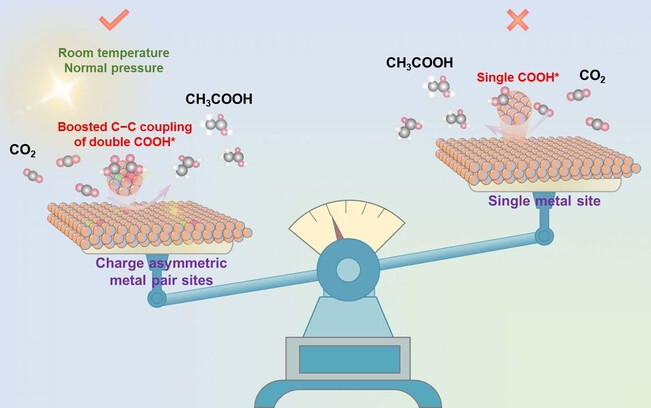Journal list menu
Export Citations
Download PDFs
Covers
Cover Picture: Probing a Major DNA Weakness: Resolving the Groove and Sequence Selectivity of the Diimine Complex Λ-[Ru(phen)2phi]2+ (Angew. Chem. Int. Ed. 13/2024)
- First Published: 18 March 2024
![Cover Picture: Probing a Major DNA Weakness: Resolving the Groove and Sequence Selectivity of the Diimine Complex Λ-[Ru(phen)2phi]2+ (Angew. Chem. Int. Ed. 13/2024) Volume 63 Issue 13, 2024](/cms/asset/cb21155c-6f10-42ec-9e56-27cf72e64a20/anie202403451-toc-0001-m.jpg)
DNA binding by intercalation , showing both sequence and enantiospecificity, of a ruthenium diimine complex, is reported by Christine Cardin, Andrew Kellett et al. in their Research Article (e202318863). The right-handed helix seen in the crystal structure shows variable degrees of twisting, including the first intercalation by a ruthenium complex from the DNA major groove. In solution, the lambda enantiomer was found to be more stabilising with a range of DNA sequences.
Inside Cover: Discovering Electrochemistry with an Electrochemistry-Informed Neural Network (ECINN) (Angew. Chem. Int. Ed. 13/2024)
- First Published: 16 February 2024
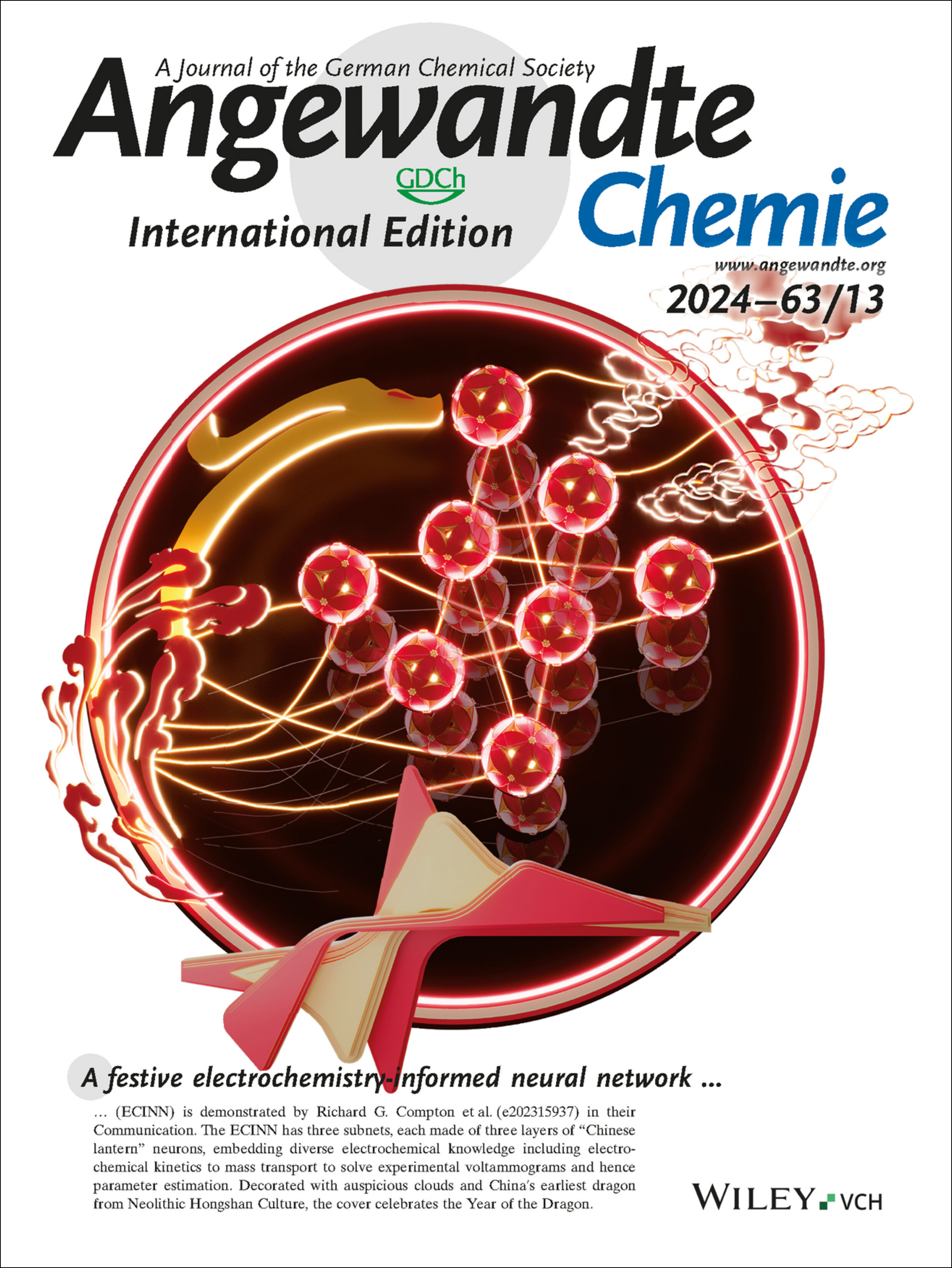
A festive electrochemistry-informed neural network (ECINN) is demonstrated by Richard G. Compton et al. (e202315937) in their Communication. The ECINN has three subnets, each made of three layers of “Chinese lantern” neurons, embedding diverse electrochemical knowledge including electrochemical kinetics to mass transport to solve experimental voltammograms and hence parameter estimation. Decorated with auspicious clouds and China′s earliest dragon from Neolithic Hongshan Culture, the cover celebrates the Year of the Dragon.
Inside Back Cover: Photoinduced Precise Synthesis of Diatomic Ir1Pd1-In2O3 for CO2 Hydrogenation to Methanol via Angstrom-Scale-Distance Dependent Synergistic Catalysis (Angew. Chem. Int. Ed. 13/2024)
- First Published: 06 March 2024
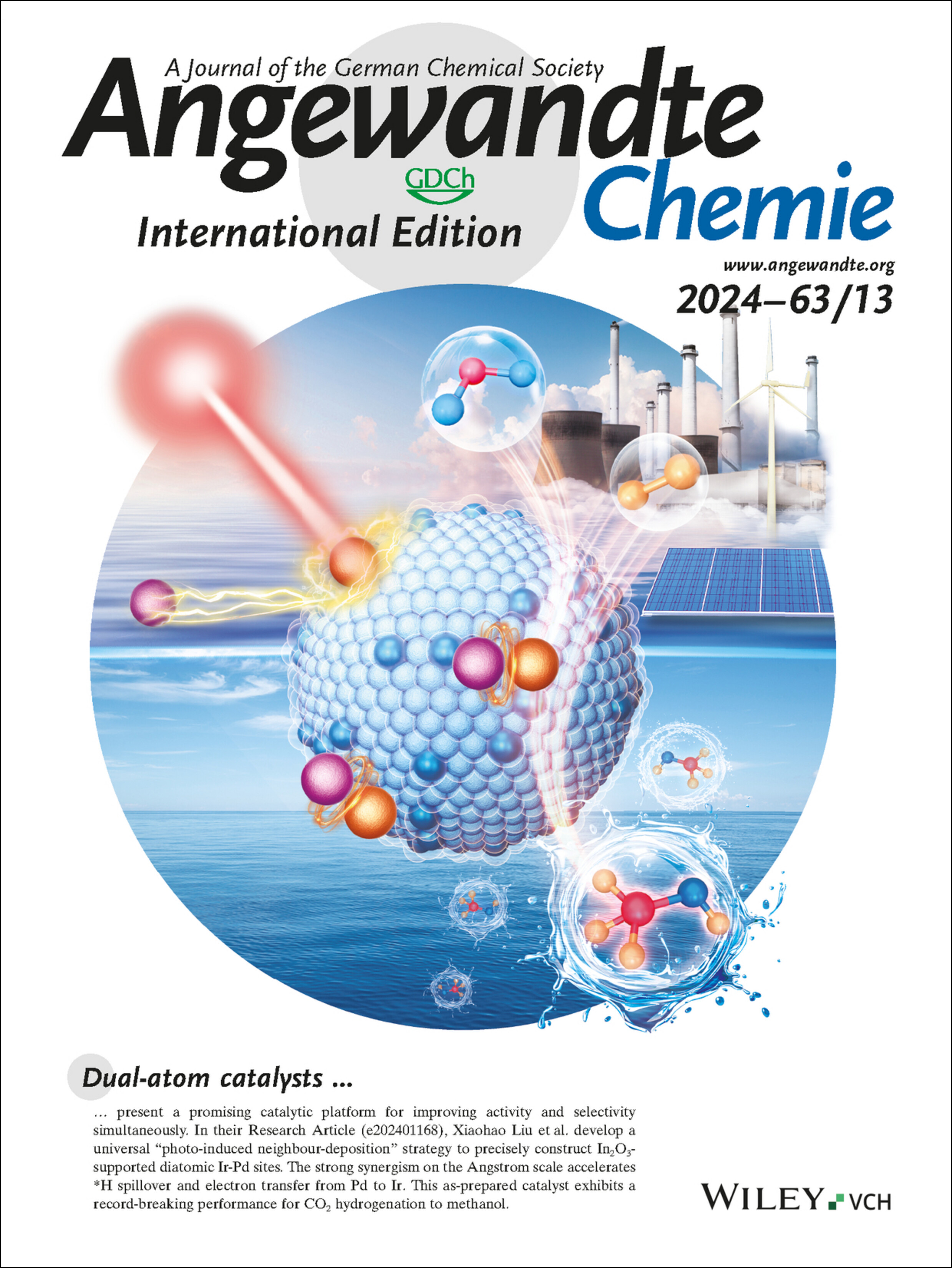
Dual-atom catalysts present a promising catalytic platform for improving activity and selectivity simultaneously. In their Research Article (e202401168), Xiaohao Liu et al. develop a universal “photo-induced neighbour-deposition” strategy to precisely construct In2O3-supported diatomic Ir-Pd sites. The strong synergism on the Angstrom scale accelerates *H spillover and electron transfer from Pd to Ir. This as-prepared catalyst exhibits a record-breaking performance for CO2 hydrogenation to methanol.
Back Cover: A Single Set of Well-Designed Aptamer Probes for Reliable On-site Qualitative and Ultra-Sensitive Quantitative Detection (Angew. Chem. Int. Ed. 13/2024)
- First Published: 22 February 2024
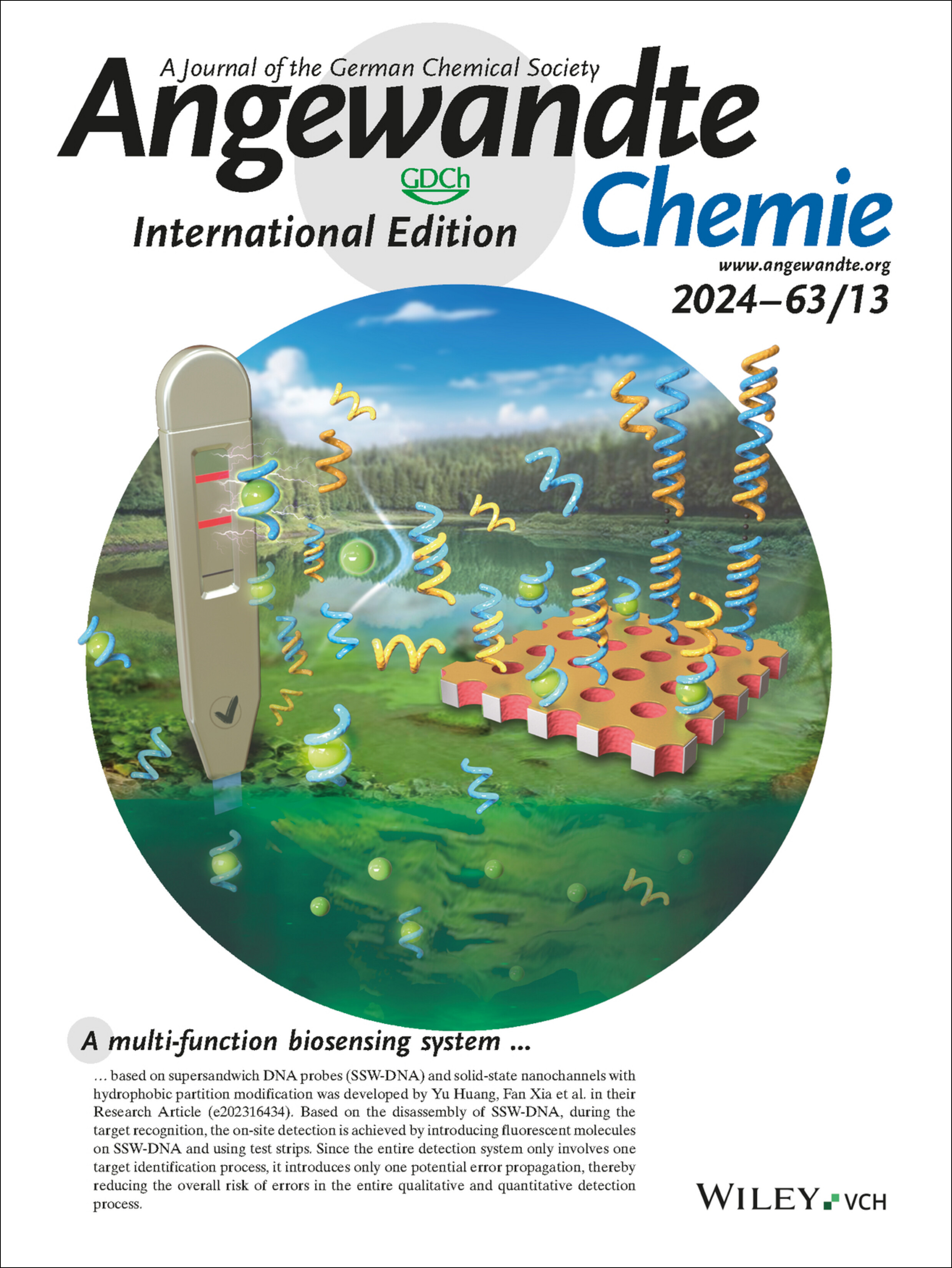
A multi-function biosensing system based on supersandwich DNA probes (SSW-DNA) and solid-state nanochannels with hydrophobic partition modification was developed by Yu Huang, Fan Xia et al. in their Research Article (e202316434). Based on the disassembly of SSW-DNA, during the target recognition, the on-site detection is achieved by introducing fluorescent molecules on SSW-DNA and using test strips. Since the entire detection system only involves one target identification process, it introduces only one potential error propagation, thereby reducing the overall risk of errors in the entire qualitative and quantitative detection process.
Frontispiece
Frontispiece: Metal Ion-Induced Large Fragment Deactivation: A Different Strategy for Site-Selectivity in a Complex Molecule
- First Published: 18 March 2024
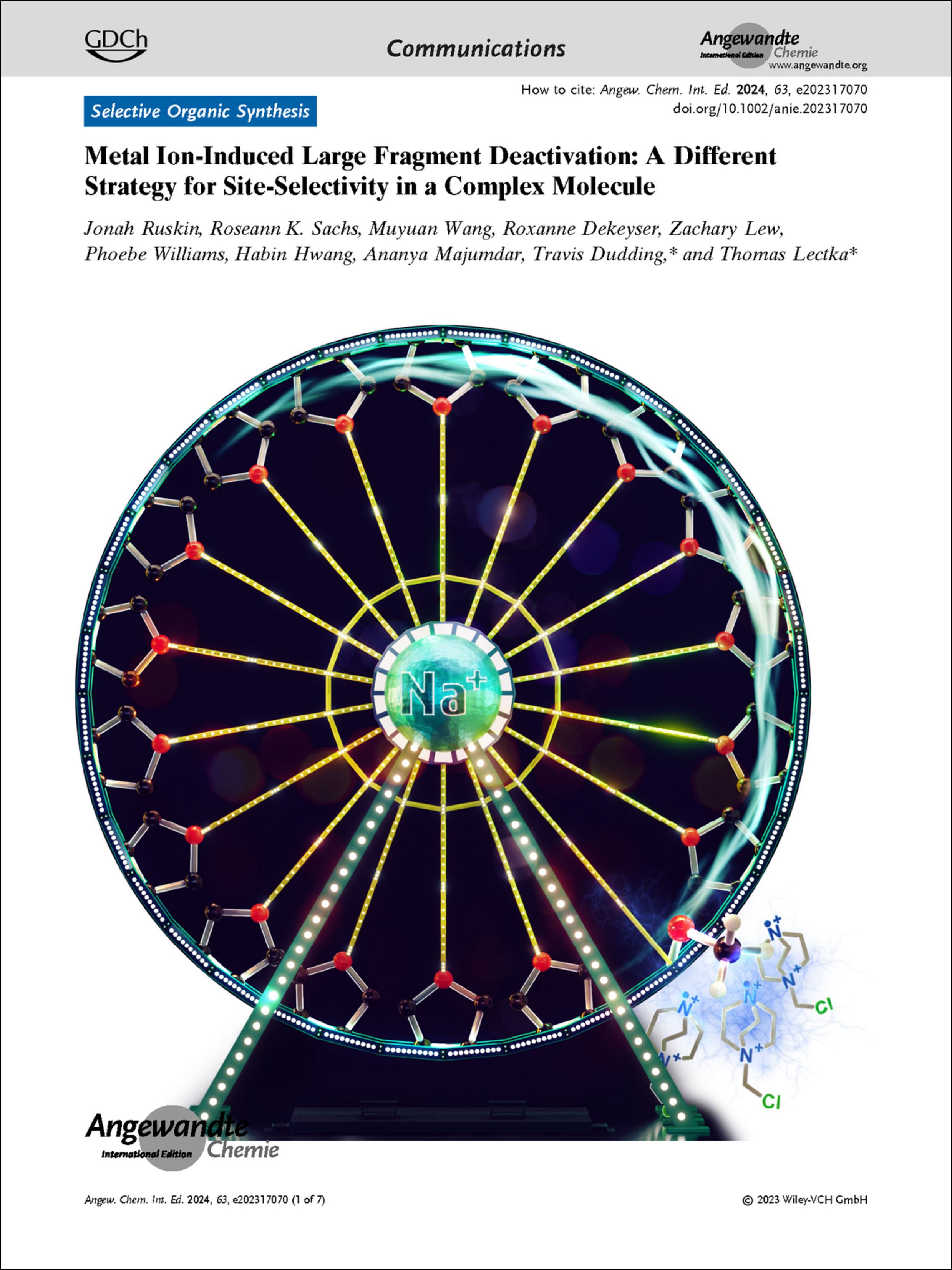
Synthetic Methods. In their Communication (e202317070), Travis Dudding, Thomas Lectka et al. report a strategy for site-selectivity in complex molecules based on metal ion-induced large fragment deactivation.
Graphical Abstract
Corrigenda
Corrigendum: Copper(I)-Catalyzed Asymmetric Allylation of Ketones with 2-Aza-1,4-Dienes
- First Published: 15 January 2024
Announcement
Introducing …
Charles C. J. Loh
- First Published: 21 February 2024

“The most exciting thing about my research is that I don't have to be right. In fact, I am always pleasantly excited when the results are opposite to my initial postulate… The most important thing I have learned from my students is to consistently remember my initial passion and the pure inquisitive attitude towards science.” Find out more about Charles C. J. Loh in his Introducing… Profile.
Michel Rickhaus
- First Published: 21 February 2024

“I advise my students to explore fully and autonomously. My job is to sort out their treasures from trash. Theirs is to go boldly where no scientist has gone before… The most important factor in the choice of my current research topic was structural beauty. I love architecture and I am convinced that an artistic mindset has always been a key approach to chemistry.” Find out more about Michel Rickhaus in his Introducing… Profile.
Viewpoint Articles
Science Competitions
Innovation and Team Spirit: The Magic of Science Competitions Seen through the Lens of the Compound Challenge
- First Published: 23 February 2024

What makes a chemistry-based innovation challenge successful and how can activities for scientific outreach be improved? In this Viewpoint we discuss the Compound Challenge—a global retrosynthesis competition that has resonated within the scientific community. Through examining the feedback of the participants, we gain valuable insight and lessons into what makes an open innovation activity successful and what pitfalls to avoid.
Minireviews
Biocatalysis
Redox Out of the Box: Catalytic Versatility Across NAD(P)H-Dependent Oxidoreductases
- First Published: 04 November 2023
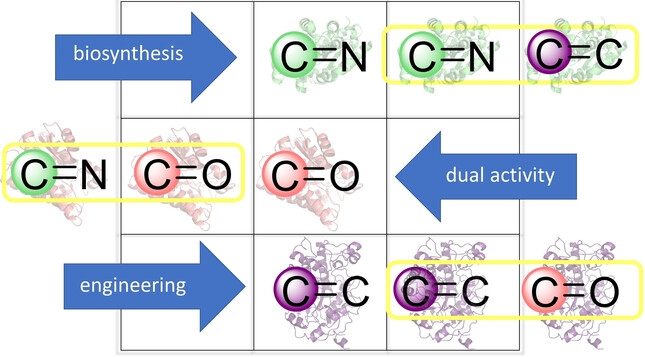
NAD(P)H-dependent reductases have been established as chemoselective biocatalysts for the asymmetric reduction of C=O, C=N, and C=C bonds. Serendipity, screening, and engineering unearthed that the ability to convert distinct electrophiles is shared by numerous enzyme families. This review sheds light on this underexplored facet of NAD(P)H-dependent reductases and highlights the catalytic versatility of these enzymes.
Single Metal Atom Catalysts
Designing Efficient Single Metal Atom Biocatalysts at the Atomic Structure Level
- First Published: 11 January 2024
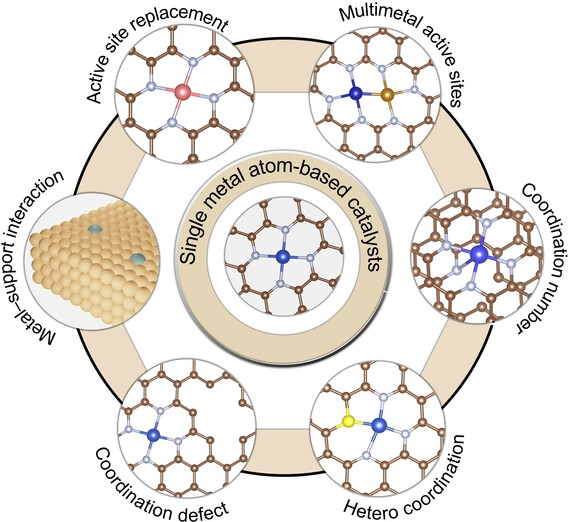
In this minireview, we highlight the design of single metal atom catalysts at the atomic structure level by focusing on the optimization of catalytic active sites, coordination environment, and active site-support interactions, and briefly discuss their biological catalytic mechanisms for biomedical applications.
Heterogeneous Catalysis
Reviews
Nanocatalysts
Nanocatalytic Anti-Tumor Immune Regulation
- First Published: 11 January 2024
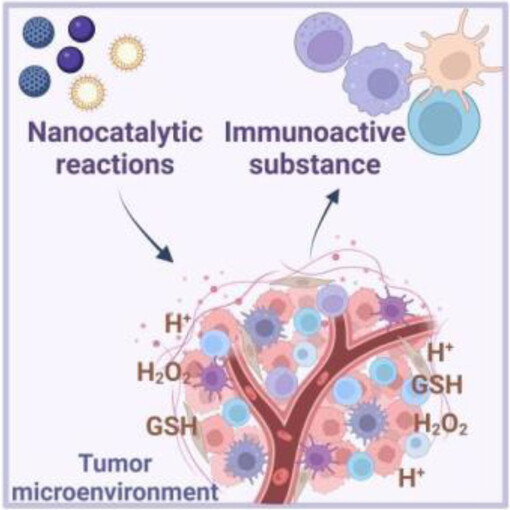
In this paper, we discuss how nanocatalysts specifically regulate anti-tumor immunity through the tumor microenvironment, and the key is to use unique components or redox status in solid tumors to initiate catalytic reactions for selective release of immune regulators at the tumor site. The biological mechanism of nanocatalytic reaction in regulating antitumor immunity was discussed in detail and the prospects were prospected.
Sonogenetics
Sonogenetics for Monitoring and Modulating Biomolecular Function by Ultrasound
- First Published: 10 January 2024

Sonogenetics is an evolving field in which ultrasound is used for the molecular control of cellular functions at different levels, thereby opening new avenues in biological and medical research. Here we discuss sonogenetic mediators and review state-of-the-art sonogenetic methods utilizing thermal and mechanical ultrasonic effects as well as mechanochemically reactive macromolecular systems and ultrasound biomolecular imaging.
Research Articles
Electrocatalysis
pKa as a Predictive Descriptor for Electrochemical Anion Adsorption
- First Published: 10 February 2024

Using detailed experiments on a single-crystal electrode, we find that the adsorption strength of a series of carboxylate anions to a metal is linearly corelated with their acid dissociation constant (pKa). Density functional theory shows that this correlation is dictated by the difference in their electron affinity—how easily the anion can give up its electron upon adsorption determines its adsorption strength.
Reaction Mechanisms
Reversible Radical Addition Guides Selective Photocatalytic Intermolecular Thiol-Yne-Ene Molecular Assembly
- First Published: 19 January 2024
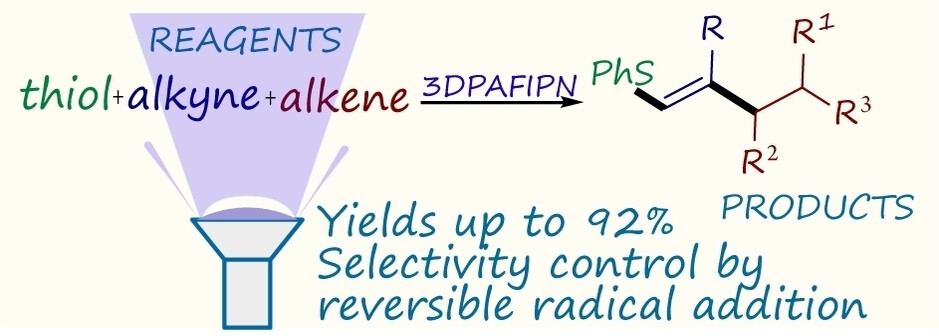
A metal-free photoredox three-component coupling of thiols with readily available alkynes and alkenes has been developed. The reaction mechanism was evaluated by combining ESI-HRMS, EPR spectroscopy, isotope labeling and control experiments. The applicability of the reversible radical addition approach for intermolecular reactions and the key role of π–π stacking interactions in stereoselectivity control have been shown by DFT studies.
Covalent Organic Frameworks | Hot Paper
Amphiphilic Covalent Organic Framework Nanoparticles for Pickering Emulsion Catalysis with Size Selectivity
- First Published: 31 January 2024
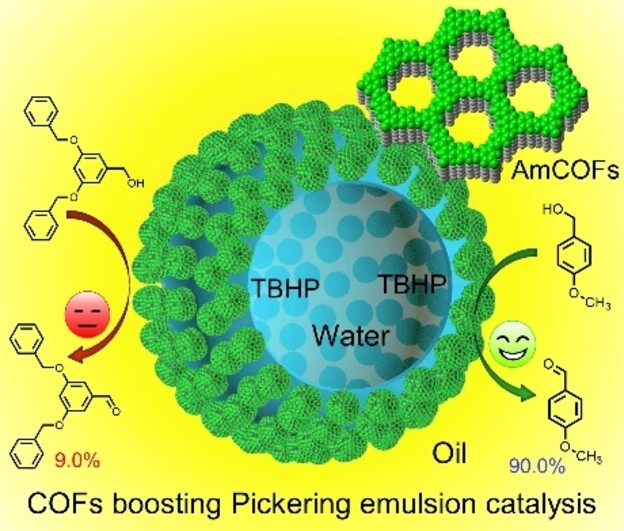
Covalent organic framework (COF) nanoparticles constructed with highly hydrophobic monomers as linkers were demonstrated to show a superior amphiphilicity for the formation of stable Pickering emulsions. Because of the high surface areas and tunable pore diameters of COFs, Pickering emulsion catalysis with both a high reaction efficiency and a remarkable size selectivity was achieved.
NMR Spectroscopy
Axial–Equatorial Halide Ordering in Layered Hybrid Perovskites from Isotropic–Anisotropic 207Pb NMR
- First Published: 02 February 2024
Lithium Metal Batteries
Dual-Salt Electrolyte Additive Enables High Moisture Tolerance and Favorable Electric Double Layer for Lithium Metal Battery
- First Published: 02 February 2024
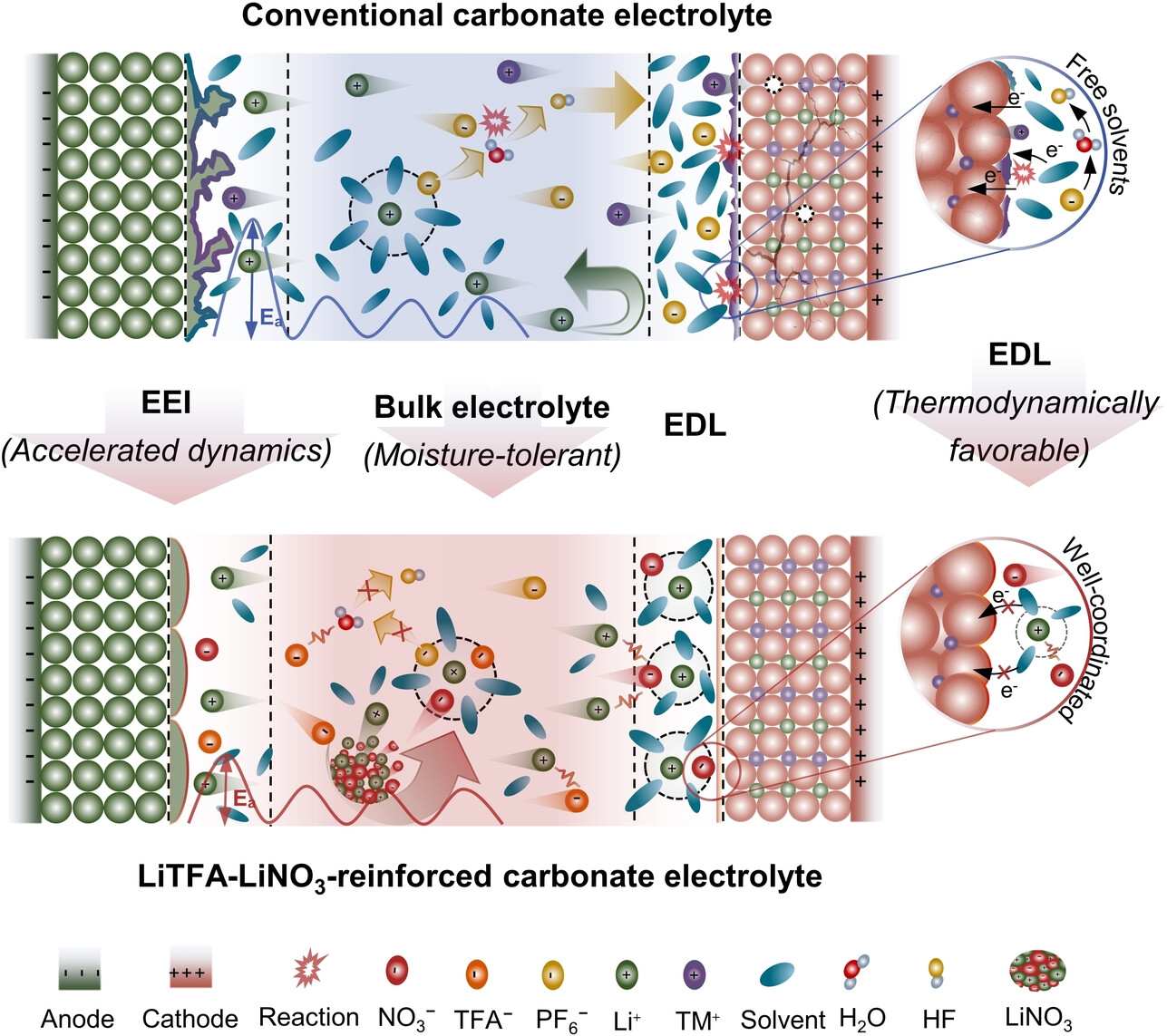
A dual-salt additive-reinforced carbonate electrolyte (LTFAN) is proposed for stabilizing high-voltage LMBs. The in situ generated nitrogenous and fluoride-rich electrode electrolyte interphase with LTFAN vastly accelerates the interfacial reaction dynamics, and dual-salt additive notably strengthens the moisture tolerance. A thermodynamically favorable electric double layer at charged cathode interface is constructed.
Sulfonyl Molecules Induced Oriented Lithium Deposition for Long-Term Lithium Metal Batteries
- First Published: 04 February 2024
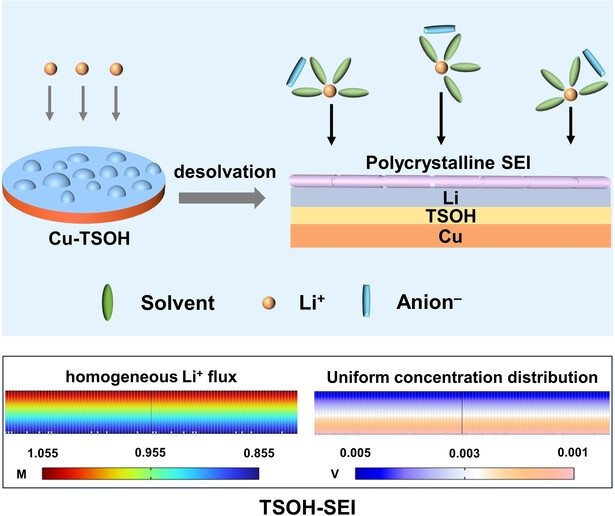
During Li+ desolvation, the electrochemical binding ability of TSOH regulates Li+ plating morphology along the (110) crystal surface toward dendrite-free Li anode. The electron-rich structure brings lower reduction potential energy and inhibits decomposition of Li salts. Even at −60 °C, a ‘smooth and dense’ SEI is formed, significantly reducing interface transmission resistance of Li+ ions.
Spin Crossover | Hot Paper
Unusual Electronic Structures of an Electron Transfer Series of [Cr(μ-η1 : η1-N2)Cr]0/1+/2+
- First Published: 01 February 2024
![Unusual Electronic Structures of an Electron Transfer Series of [Cr(μ-η1 : η1-N2)Cr]0/1+/2+](/cms/asset/9e0ef26a-320c-49e1-a9ef-57a0a38d3027/anie202315386-toc-0001-m.jpg)
In dinitrogen (N2) fixation chemistry, bimetallic end-on bridging N2 complexes M(μ-η1 : η1-N2)M can split N2 into terminal nitrides and hence attract great attention. We describe detailed bonding analyses of {[Cp*Cr(dmpe)]2(μ-N2)}0/1+/2+ (1–3) using a combined spectroscopic and computational approach. The focus is to shed light on the electronic structure contribution to their inabilities to split N2.
Photophysics
Tuning the Absorption, Fluorescence, Intramolecular Charge Transfer, and Intersystem Crossing in Spiro[fluorene]acridinone
- First Published: 05 February 2024
![Tuning the Absorption, Fluorescence, Intramolecular Charge Transfer, and Intersystem Crossing in Spiro[fluorene]acridinone](/cms/asset/9fa4ddc1-90a2-49eb-862d-8b8a24b0e8d8/anie202313936-toc-0001-m.jpg)
The rational design and photophysical investigation of donor-acceptor dyads based on spiro[fluorene-9,7’-dibenzo[c,h]acridine]-5’-one uncover the complex interplay among different light-driven pathways, including intramolecular charge transfer, fluorescence, and intersystem crossing. This investigation offers important guidance for designing novel functional materials for triplet sensitizers and fluorescent sensors.
Organic Chemistry
Cobalt-Catalyzed Enantio- and Regioselective C(sp3)−H Alkenylation of Thioamides
- First Published: 24 December 2023
Peptide Modification
Diphenylphosphinylhydroxylamine (DPPH) Affords Late-Stage S-imination to access free-NH Sulfilimines and Sulfoximines
- First Published: 30 January 2024
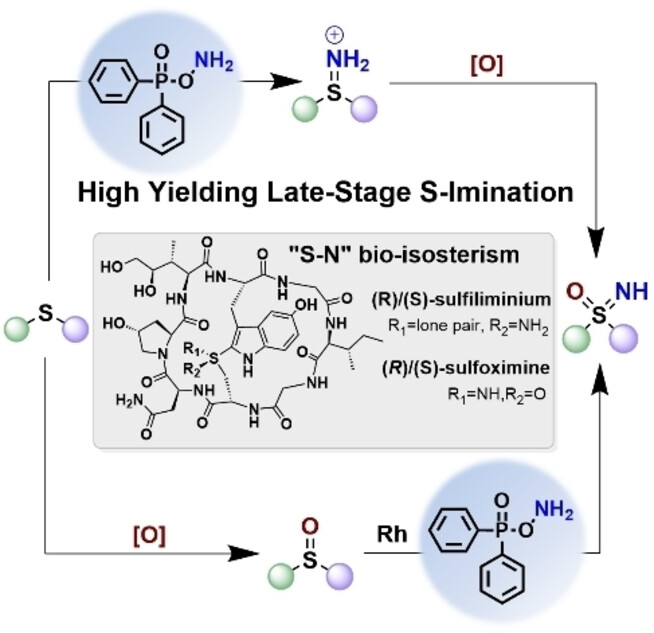
Metal-free, and high-yielding sulfur-imination using O-(diphenylphosphinyl)hydroxyl amine to access sulfilimine salts and free-NH sulfoximines has been reported. Its generality was evidenced using a broad substrate scope along with late-stage functionalization of complex, biologically relevant substrates including a notorious amatoxin. DPPH was also shown to iminate sulfoxides with high yields under Rh catalysis to afford sulfoximines.
DNA Grooves
Probing a Major DNA Weakness: Resolving the Groove and Sequence Selectivity of the Diimine Complex Λ-[Ru(phen)2phi]2+
- First Published: 25 January 2024
Biocatalysis
Engineering Hydroxylase Activity, Selectivity, and Stability for a Scalable Concise Synthesis of a Key Intermediate to Belzutifan
- First Published: 26 January 2024

Alpha-ketoglutarate-dependent dioxygenases (αKGDs) are promising biocatalysts for selective oxidations, but their practical use is limited by substrate scope and stability. We engineered an αKGD to hydroxylate a non-native substrate with total turnovers exceeding those of reported αKGDs. The engineered αKGD enabled direct synthesis of a hydroxy-indanone to replace the previous five step synthesis en route to the oncology treatment belzutifan.
Synthetic Methodology
Mechanophotocatalysis: A Generalizable Approach to Solvent-minimized Photocatalytic Reactions for Organic Synthesis
- First Published: 23 January 2024

Via the synergistic union with mechanochemistry, four archetypal photocatalysis reactions have been realized under solvent-free or solvent-minimized conditions. The mechanophotocatalytic versions feature competitive or superior efficiencies to the solution-state reactions, while also showcasing an enhanced tolerance to aerobic conditions.
Aptamer Probes | Very Important Paper
A Single Set of Well-Designed Aptamer Probes for Reliable On-site Qualitative and Ultra-Sensitive Quantitative Detection
- First Published: 08 January 2024
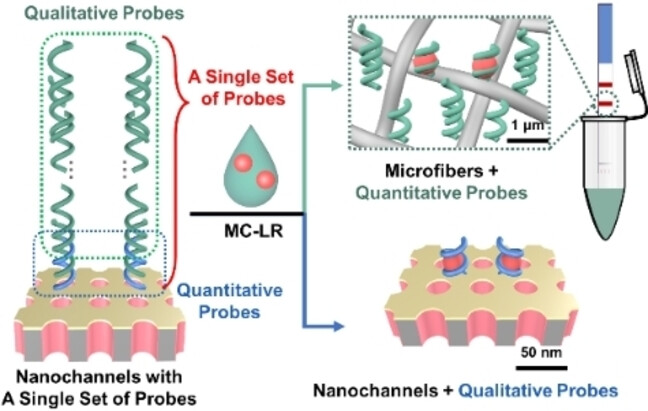
An aptasensor was developed with supersandwich DNA (SSW-DNA) modified on the outer surface of nanochannels with hydrophobic inner walls realizing the reliable on-site qualitative and laboratory ultra-sensitive quantitative detection of MC–LR. This work highlights the enhanced performance and broader applicability based on the well-designed single set of probes and nanochannels.
Porosity | Hot Paper
Multivariate Machine Learning Models of Nanoscale Porosity from Ultrafast NMR Relaxometry
- First Published: 30 January 2024
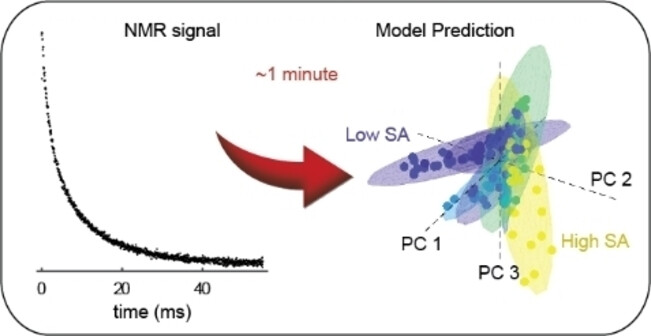
Machine learning allows rapid classification and prediction of the surface area (SA) of nanoporous materials through NMR relaxometry measurements of solvent imbibed in the porous network. Here, principal component analysis (PCA) screens “high” and “low” SA materials, and partial least squares (PLS) provides numerical estimates of SA. This non-destructive technique can be used to help develop new materials with optimized porosity.
Mimetic Dendrimers
Synthesis and Detection of BODIPY-, Biotin-, and 19F- Labeled Single-Entity Dendritic Heparan Sulfate Mimetics
- First Published: 03 February 2024
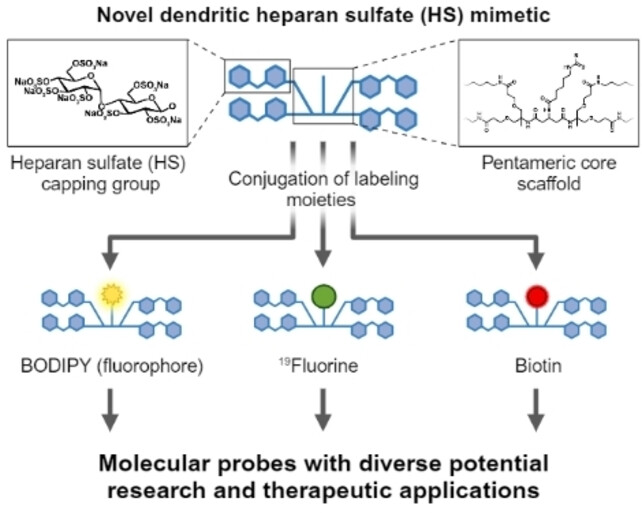
Labeled single-entity heparan sulfate (HS) mimetics were synthesized to investigate their cellular distribution, involvement with the immune system, and biodistribution. A fluorescently labeled HS mimetic was observed in the brain of mice and was shown to preferentially associate with immune cells from the tumor site rather than from the spleen. The compounds reported represent a new tool box helping to unravel the mechanism of action of HS mimetics.
DNA Nanotechnology
“Turbo-Charged” DNA Motors with Optimized Sequence Enable Single-Molecule Nucleic Acid Sensing
- First Published: 12 January 2024
All-Solid-State Lithium- Metal Batteries
Nanoscale Visualization of Lithium Plating/Stripping Tuned by On-site Formed Solid Electrolyte Interphase in All-Solid-State Lithium-Metal Batteries
- First Published: 05 February 2024
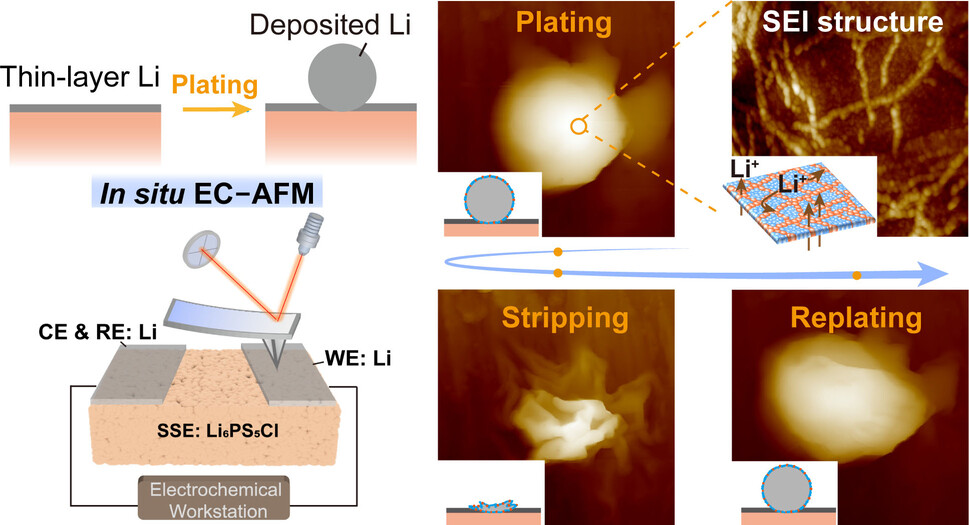
Using in situ methods of atomic force microscopy, X-ray photoelectron spectroscopy and optical microscopy, we visualized the processes of Li plating, stripping and replating tuned by the on-site formed SEI at the argyrodite solid-electrolyte/Li anode interface in all-solid-state Li-metal batteries. Our work provides insights into correlations between the interfacial evolution and cell performance, contributing to the improvement of solid-state energy devices.
KRAS Assembly
Conditional Cooperativity in RAS Assembly Pathways on Nanodiscs and Altered GTPase Cycling
- First Published: 02 February 2024
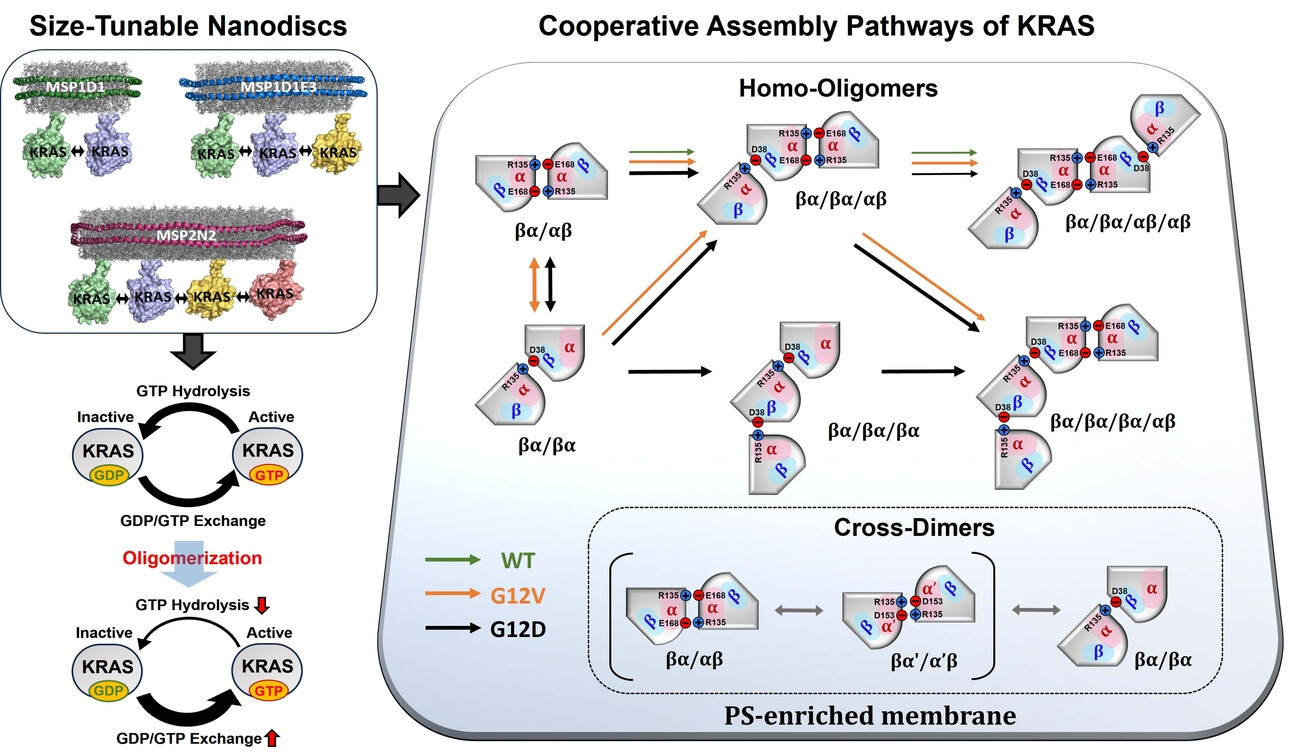
Size-tunable nanodisc platforms and NMR revealed the structural mechanism for the cooperative self-assembly of both wild-type and oncogenic mutants of native, fully processed KRAS on the membrane. The cooperativity is modulated by the mutation and nucleotide states of KRAS and the lipid composition of the membrane. Higher-order oligomers retain higher numbers of active GTP-bound protomers by reducing GTP hydrolysis and increasing GDP/GTP exchange.
Enzyme Mechanisms | Hot Paper
Molecular and Structural Basis for Cγ−C Bond Formation by PLP-Dependent Enzyme Fub7
- First Published: 03 February 2024
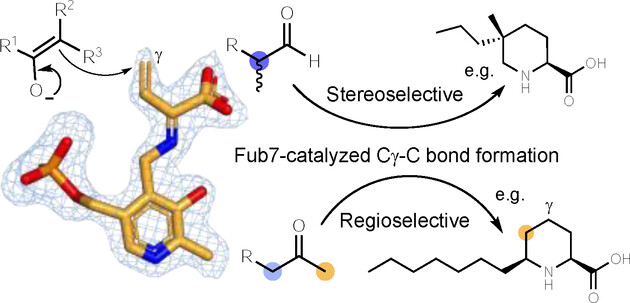
Fub7, a pyridoxal 5’-phosphate (PLP)-dependent enzyme, catalyzes stereoselective and substrate-dependent regioselective Cγ−C bond formations. Now a structural and enzymological study have elucidated the structural and molecular underpinnings of its catalytic specificity and selectivity, paving the way for harnessing its activity in the synthesis of cyclic noncanonical amino acids.
Li Metal Batteries
The Synthesis of Three-Dimensional Hexagonal Boron Nitride as the Reinforcing Phase of Polymer-Based Electrolyte for All-Solid-State Li Metal Batteries
- First Published: 30 January 2024
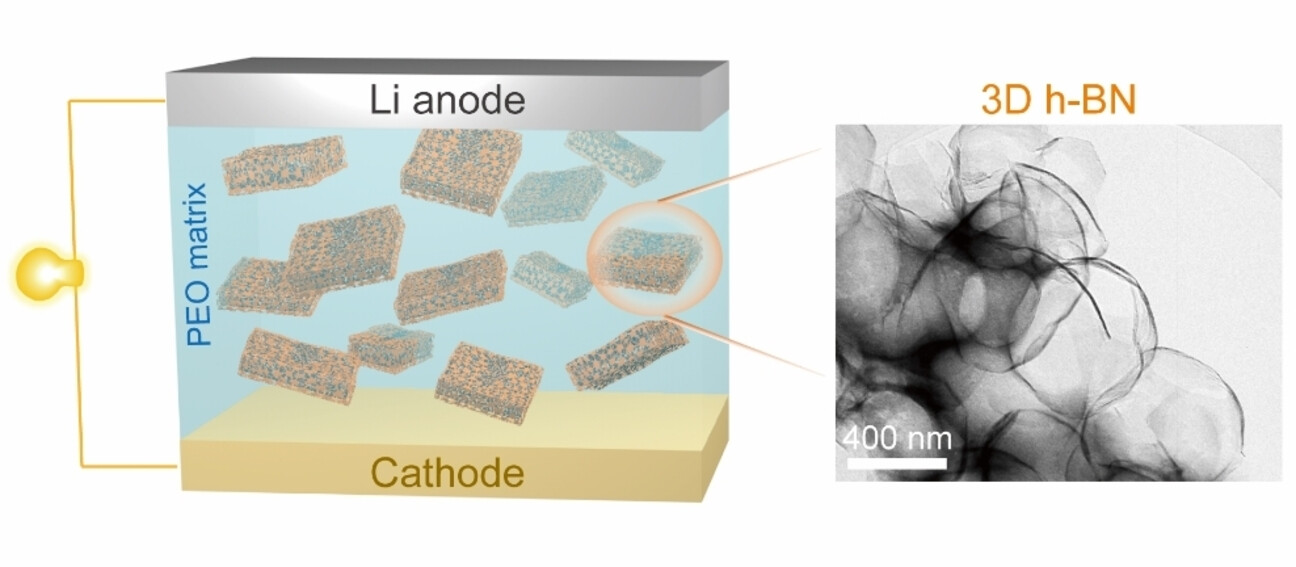
A powdery h-BN with a micron-sized three-dimensional (3D) structure was developed with a facile NaCl-glucose-assisted approach based on reduced reaction temperature. It exhibited superior advantages in improving the electrochemical performance of polyethylene oxide (PEO)-based electrolytes compared with the commercial two-dimensional (2D) h-BN.
Xeno-Nucleic Acids | Hot Paper
Enzymatic Synthesis of TNA Protects DNA Nanostructures
- First Published: 07 February 2024

Terminal deoxynucleotidyl transferase (TdT) accepts threose nucleic acid (TNA) nucleotide substrates, and catalyzes de novo synthesis of TNA on the 3’ ends of DNA oligonucleotides. The TNA extension protects DNAs from nuclease digestion, and the DNA-TNA chimeras are used directly as staple strands in the self-assembly of DNA origami nanostructures (DONs). The TNA-shielded DONs are more biologically stable under the physiological environment.
Electrochemical CO2 reduction
Concentrated Formic Acid from CO2 Electrolysis for Directly Driving Fuel Cell
- First Published: 02 February 2024
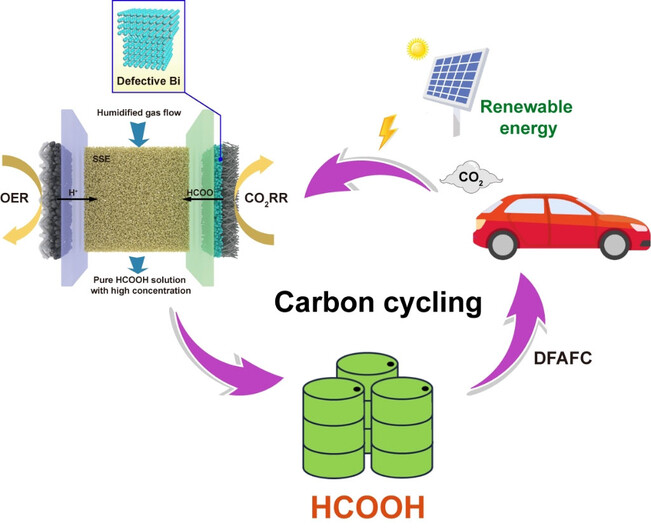
The continuous production of pure formic acid solution with high concentration (2 M) for more than 300 h was achieved by using an MEA electrolyzer containing solid state electrolytes equipped with our developed moist heat ventilation collection system. The resultant formic acid could directly serve as the fuel for air-breathing formic acid fuel cells, which closed the carbon cycle loop of the formic acid economy.
Electrocatalysis
Boundary-Rich Carbon-Based Electrocatalysts with Manganese(II)-Coordinated Active Environment for Selective Synthesis of Hydrogen Peroxide
- First Published: 01 February 2024
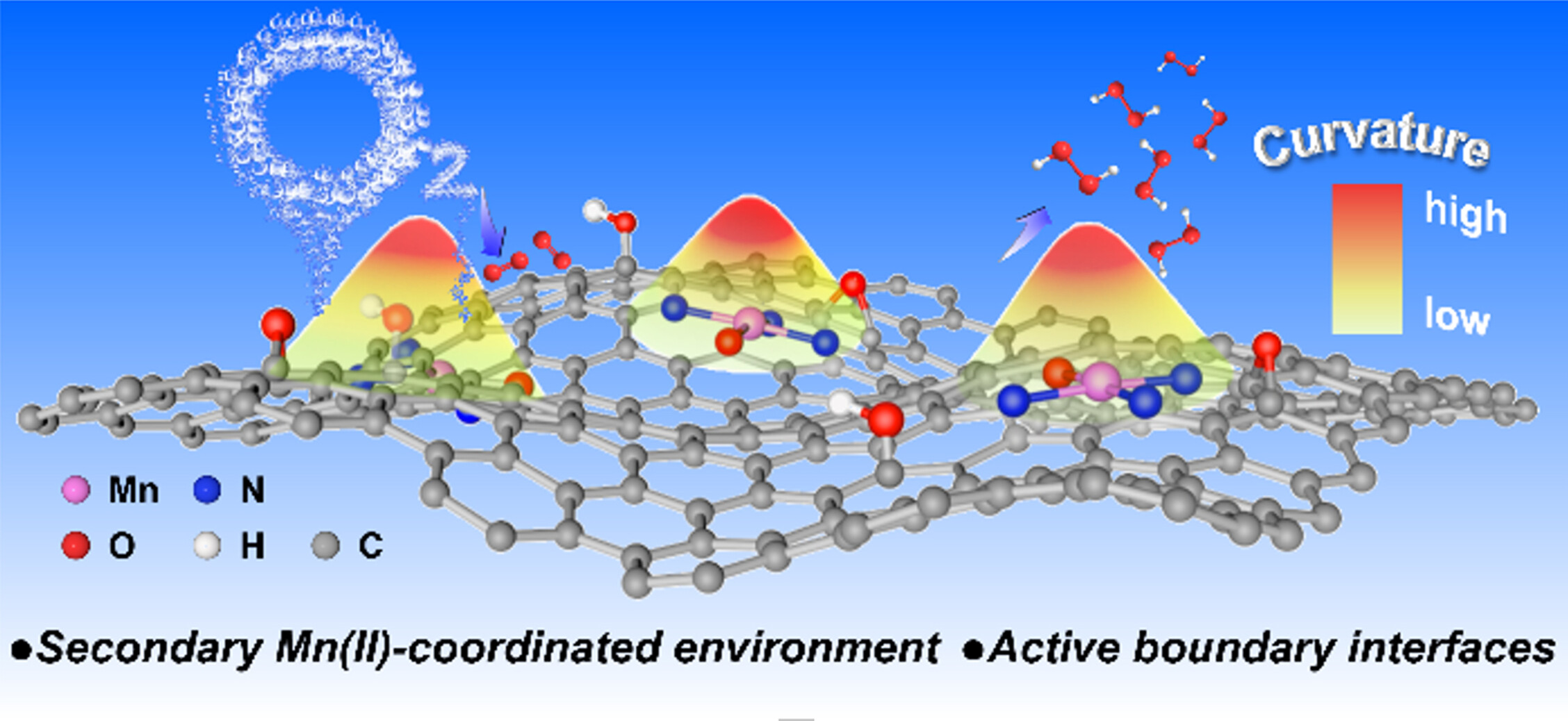
Carbon-supported manganese-centered boundary-rich electrocatalysts show high activity for selective H2O2 synthesis. The secondary epoxide and hydroxyl groups surrounding Mn−N3−O sites and the O2 enrichment in the curved boundaries together contribute to the activity enhancement for the targeted electrosynthesis.
Single-Molecule Magnets | Hot Paper
Bimetallic Synergy Enables Silole Insertion into THF and the Synthesis of Erbium Single-Molecule Magnets
- First Published: 01 February 2024
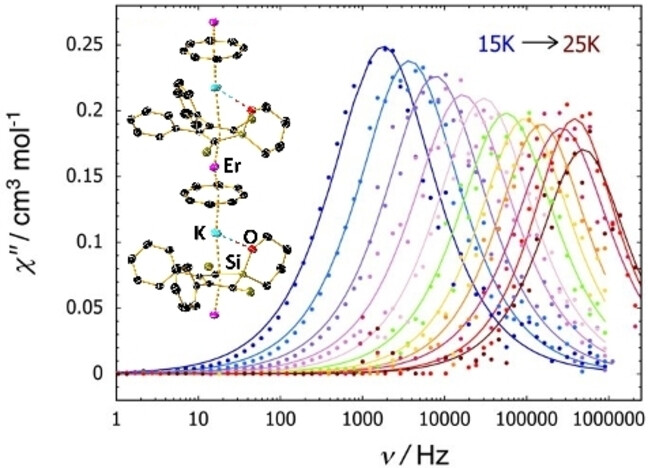
A potassium silole salt reacts with erbium or yttrium cyclo-octatetraenyl half-sandwich complexes via insertion of a silole silicon atom into a carbon-oxygen bond of THF. Analogous reactions involving a potassium germole salt reveal intact transfer of the germole to the rare-earth element, giving germole-ligated coordination polymers. The erbium-containing products are single-molecule magnets, and one example is characterized using high-frequency AC susceptometry.
CO2 Reduction | Hot Paper
Uncovering Photoelectronic and Photothermal Effects in Plasmon-Mediated Electrocatalytic CO2 Reduction
- First Published: 06 February 2024
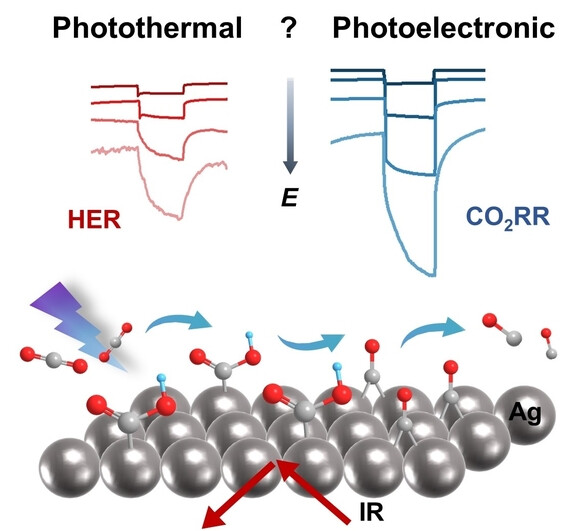
This work quantitatively disentangles the photoelectronic (PE) and photothermal (PT) effects in plasmon-mediated electrocatalysis using CO2RR on Ag NPs electrode as the model system. The PE effect prevails over a wide potential window for the CO2RR to CO, while the PT effect dominates the H2 evolution reaction at high overpotentials. It is revealed spectroscopically that the carbonyl-containing C1 intermediate applies to the plasmon-promoted CO2RR to CO process.
Supramolecular Chemistry | Very Important Paper
Superatomic Molecules | Hot Paper
Staggered Assembly of a Dimeric Au13 Cluster: Impacts on Coupling of Geometric Isomerism
- First Published: 03 February 2024
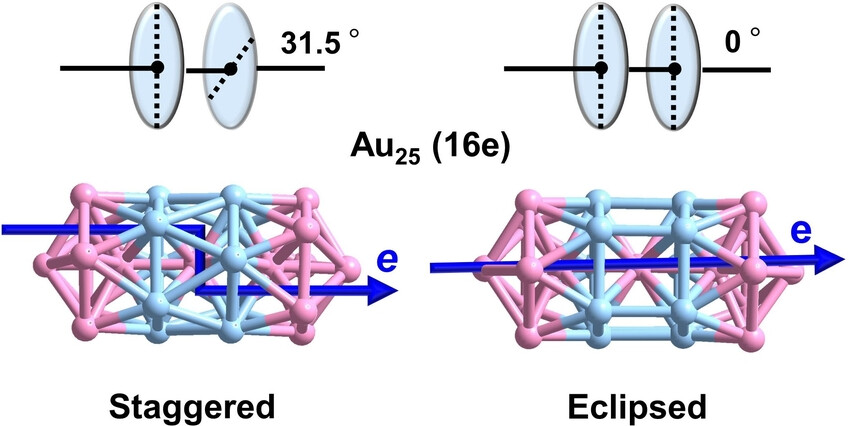
The first completely staggered configuration of a di-superatomic Au25 cluster was solved with atomic precision. The significant torsion angle induces changes in electron coupling and complicates the relaxation pathway of electrons in the excited state when compared with the parallel eclipsed configuration.
Cycloaddition
Enantioselective Intramolecular ortho Photocycloaddition Reactions of 2-Acetonaphthones
- First Published: 26 January 2024

The intramolecular ortho photocycloaddition of 2-acetonaphthones has been achieved with high enantioselectivity. The catalytic use of a chiral Lewis acid was critical for the success of the reaction and its mode of action has been elucidated by mechanistic experiments and calculations. The primary photocycloaddition products underwent photochemically or thermally a variety of consecutive reactions.
Photocatalytic water oxidation | Hot Paper
Coupling Electron Transfer and Redox Site in Boranil Covalent Organic Framework Toward Boosting Photocatalytic Water Oxidation
- First Published: 04 February 2024
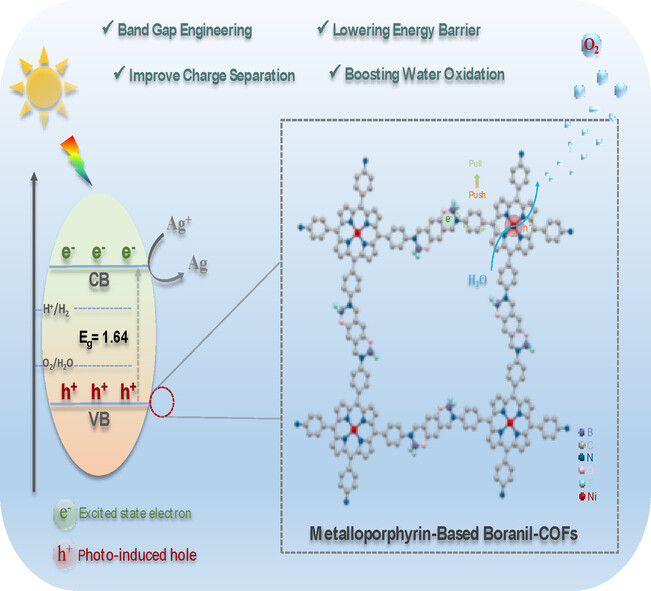
A series of metalloporphyrin-based boranil covalent organic framework (M-TAPP-COF-BF2) photocatalysts are fabricated through the post-functionalization strategy. Density functional theory and experimental studies unveiled the synergistic effect of metal (Ni) and BF2 moiety that alter the electronic band structures and charge carrier mobility, leading to a lower energy barrier for boosting oxygen evolution reaction.
Nanographenes
On-Surface Synthesis of Non-Benzenoid Nanographenes Embedding Azulene and Stone-Wales Topologies
- First Published: 01 February 2024
C-H Activation
Divergent Synthesis of Multi-Substituted Aminotetralins via [4+2] Annulation of Aldimines with Alkenes by Rare-Earth-Catalyzed Benzylic C(sp3)−H Activation
- First Published: 16 January 2024
![Divergent Synthesis of Multi-Substituted Aminotetralins via [4+2] Annulation of Aldimines with Alkenes by Rare-Earth-Catalyzed Benzylic C(sp3)−H Activation](/cms/asset/3baaf4e8-0e84-4a16-ada4-e25ca420187b/anie202318203-toc-0001-m.jpg)
Diastereoselective [4+2] annulation of aldimines with alkenes via benzylic C(sp3)−H activation has been achieved for the first time by the use of half-sandwich rare-earth catalysts with different metals, providing an efficient protocol for the divergent synthesis of both trans and cis diastereoisomers of the multi-substituted 1-aminotetralin derivatives from readily available aldimines and alkenes.
Photoacoustic Imaging | Hot Paper
A Small-Molecule Ratiometric Photoacoustic Probe for the High-Spatiotemporal-Resolution Imaging of Copper(II) Dynamics in the Mouse Brain
- First Published: 01 February 2024
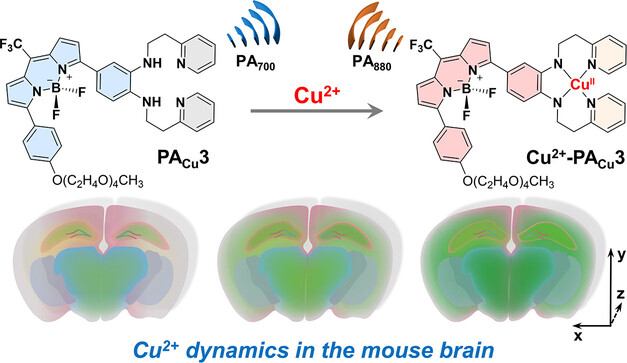
We report that in vivo Cu2+ dynamics in the brain can be spatiotemporal visualized using the rational designed BBB-permeable ratiometric photoacoustic probe as the imaging agent. Taking advantages of high-spatiotemporal-resolution imaging abilities of the probe, we have revealed the detailed alternations in Cu2+ levels in the Parkinson's disease mouse brain during both the disease progression and drug intervention at micron-resolution.
mRNA Vaccine
Development of Mannosylated Lipid Nanoparticles for mRNA Cancer Vaccine with High Antigen Presentation Efficiency and Immunomodulatory Capability
- First Published: 06 February 2024

In order to promote the antitumor efficacy of mRNA vaccines, sweet lipid nanoparticles (STLNPs-Man) are developed by incorporating a mannosylated ionizable lipid to enhance the uptake by DCs through the mannose receptor-mediated endocytosis. Interestingly, STLNPs-Man exhibits the ability to downregulate the expression of cytotoxic T-lymphocyte-associated protein 4 on T cells through the blockade of CD206/CD45 axis to further potentiate the antitumor immunity.
Controlled Release | Hot Paper
Bioorthogonal “Click and Release” Reaction-Triggered Aggregation of Gold Nanoparticles Combined with Released Lonidamine for Enhanced Cancer Photothermal Therapy
- First Published: 02 February 2024
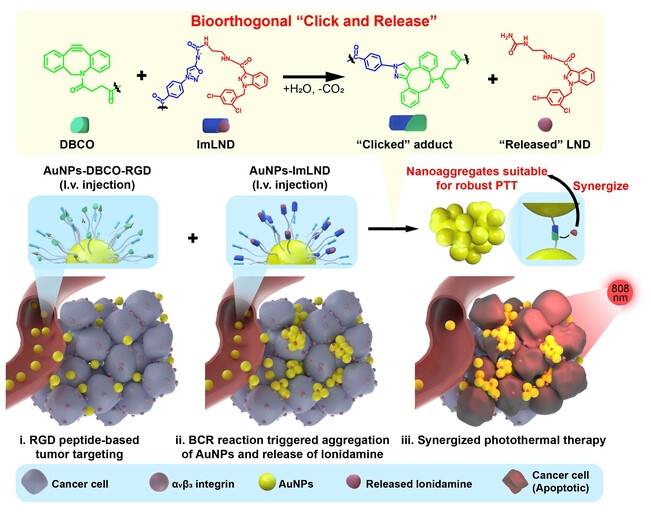
We reported the application of bioorthogonal “Click and Release” (BCR) reaction between prodrug iminosydnone-lonidamine (ImLND) and dibenzocyclooctyne (DBCO) to form highly photothermal-active nanoaggregates with synergistic drug release. The reactants of BCR reaction were grafted on surface of gold nanoparticles (AuNPs) and was proven both in vitro and in vivo to robustly enhance the therapeutic outcome of photothermal therapy.
Fluorescent Probes | Hot Paper
NIR-II Conjugated Electrolytes as Biomimetics of Lipid Bilayers for In Vivo Liposome Tracking
- First Published: 07 February 2024
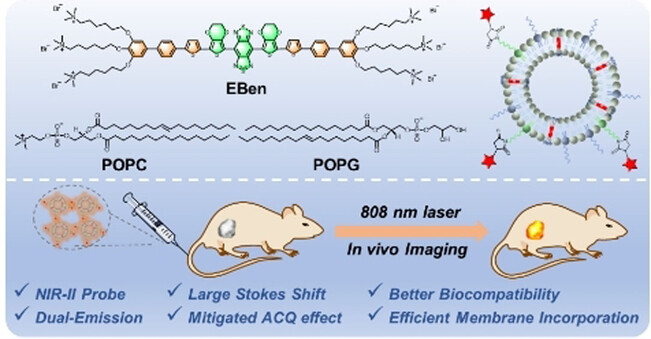
Despite the existing dye leakage drawback, lipophilic cyanine dyes are still widely used to track liposomes and other lipid systems. In this study, we have revolutionized the lipophilic dye structure by mimicking the entire lipid bilayer, rather than a single lipid molecule. The new conjugated electrolyte-based probes exhibit excellent compatibility with the lipid membrane, coupled with superior and readily adjustable photophysical properties.
Enzyme Kinetics
Rationalizing the Influence of the Binding Affinity on the Activity of Phosphoserine Phosphatases
- First Published: 26 February 2024
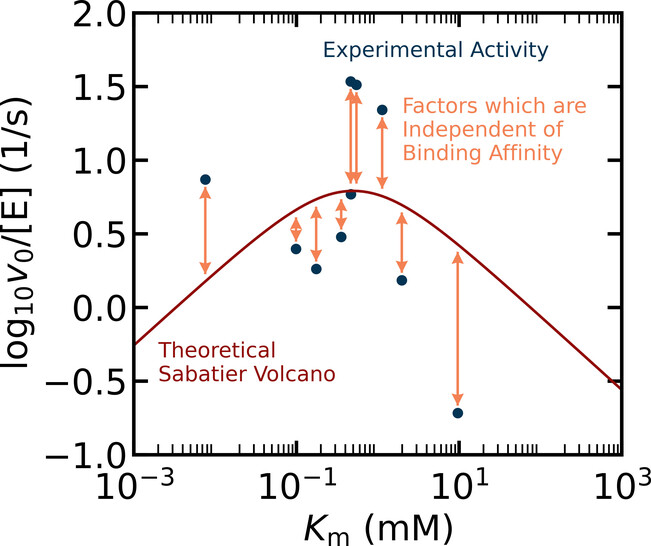
The activity of diverse phosphoserine phosphatases was maximized around an intermediate binding affinity of Km=0.5 mM, supporting the applicability of the Sabatier principle towards enzymes in general. However, there was also a large deviation between theoretical and experimental activity. Therefore, binding energy is an important parameter, but other physicochemical parameters must also be considered to maximize enzymatic activity.
Li Metal Batteries | Very Important Paper
Enabling Stable and Low-Strain Lithium Plating/Stripping with 2D Layered Transition Metal Carbides by Forming Li-Zipped MXenes and a Li Halide-Rich Solid Electrolyte Interphase
- First Published: 31 January 2024
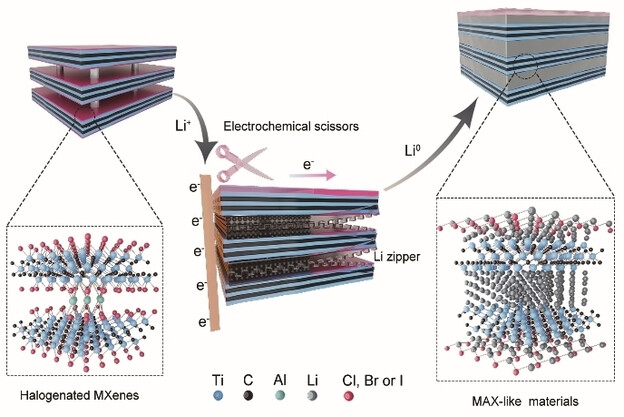
A novel “electrochemical scissor” and “Li zipper”-driven interlayer Li plating protocol in 2D layered transition metal carbides (MXenes) is proposed, where lithium serves as a “zipper” to reunite the adjacent MXene back to MAX-like phase to markedly enhance the bulk phase-structural stability, and a Li halide-rich SEI is formed by “electrochemical scissor” removing the terminals of MXenes to maintain the stability and high Li+ diffusivity of SEI.
Amines
Manganese-Catalyzed Mono-N-Methylation of Aliphatic Primary Amines without the Requirement of External High-Hydrogen Pressure
- First Published: 01 February 2024

A synergistic strategy enables the selective synthesis of mono-N-methylated aliphatic primary amines, including deuterium-labelled drugs. This innovative approach combines an earth-abundant manganese catalyst with a weak base, resulting in a practical and sustainable protocol for mono-N-methylation. By effectively inhibiting the formation of formamide byproducts, it eliminates the need for external high-pressure hydrogen.
Heterogeneous Catalysis
Photoinduced Precise Synthesis of Diatomic Ir1Pd1-In2O3 for CO2 Hydrogenation to Methanol via Angstrom-Scale-Distance Dependent Synergistic Catalysis
- First Published: 09 February 2024
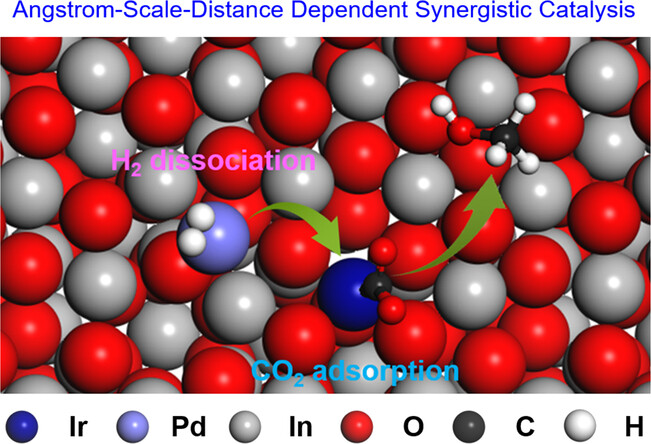
We develop a novel photo-induced neighbour-deposition strategy to precisely synthesize the heteronuclear dual-atom Ir1Pd1-In2O3(CP-PD) catalyst. The strong synergistic effect in an angstrom scale endows adjacent diatomic Ir-Pd sites with extraordinary catalytic performance for CO2 hydrogenation to methanol.
Water Splitting
Surface Reconstruction on Metal Nitride during Photo-oxidation
- First Published: 14 February 2024

Photo-induced surface reconstruction of Co3Mo3N forming amorphous Mo-rich@Co-rich bilayer structure leads to a shortened Co−Mo bond length resulting in improved performance for both photocatalytic hydrogen evolution reaction (PHER) and photocatalytic oxygen evolution reaction (POER) compared to pure Co3Mo3N.
Protein Engineering
Characterization and Engineering of Two Highly Paralogous Sesquiterpene Synthases Reveal a Regioselective Reprotonation Switch
- First Published: 07 February 2024
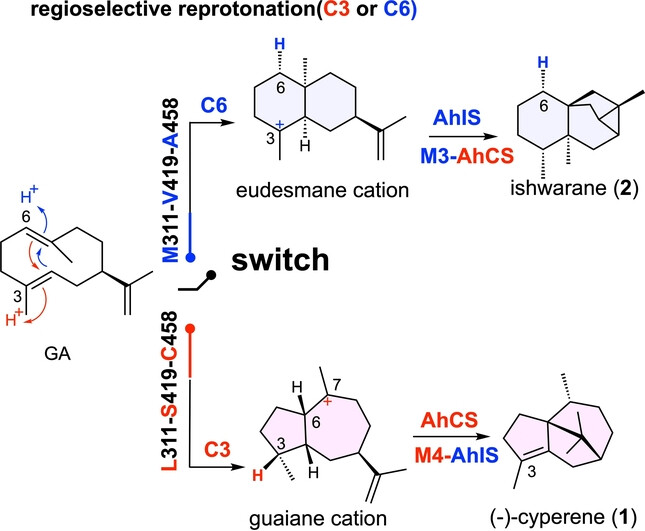
Three critical active site residues [L311-S419-C458]/[M311-V419-A458] were identified as the switch of the regioselective C3/C6 reprotonation of germacrene A in sesquiterpene synthase catalysis through the characterization and engineering of two highly paralogous sesquiterpene synthases, AhCS and AhIS, using a combination of isotopic labeling experiments, cryo-electron microscopy, and structure-guided mutagenesis.
Carbenes Chemistry
Boosting the π-Acceptor Property of Mesoionic Carbenes by Carbonylation with Carbon Monoxide
- First Published: 29 January 2024
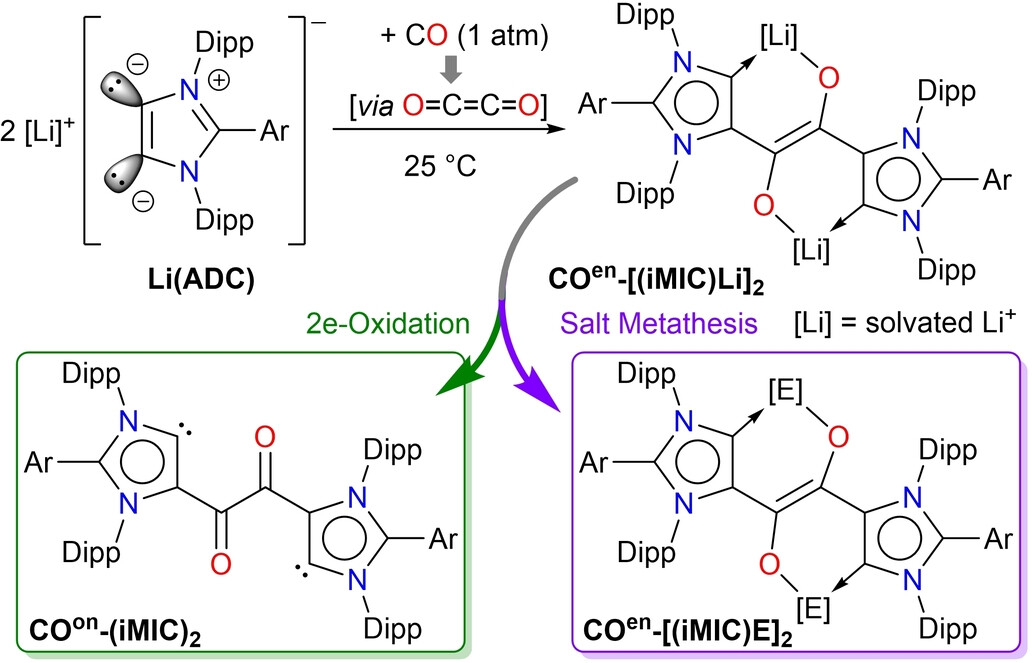
Direct room temperature dimerization of carbon monoxide by anionic dicarbenes Li(ADC) has been reported to quantitatively yield (E)-ethene-1,2-bis(olate) bridged mesoionic carbene (iMIC) lithium compounds, COen-[(iMIC)Li]2. They undergo 2e-oxidation to afford 1,2-dione bridged bis iMIC, COon-(iMIC)2 containing compounds while redox neutral salt metatheses yield COen-[(iMIC)E]2 compounds (E=main group species).
Communications
Selective Organic Synthesis
Metal Ion-Induced Large Fragment Deactivation: A Different Strategy for Site-Selectivity in a Complex Molecule
- First Published: 08 December 2023

Complex natural product functionalizations generally involve the use of highly engineered reagents, catalysts, or enzymes to achieve site-selectivity by lowering a selected transition state energy. We invert this strategy by raising the energy of transition states representing undesirable sites through metal ion chelation, leaving desirable ones accessible to functionalization by a potentially wide variety of electrophilic synthetic methods.
Caged Compounds
Bidirectional Neuronal Actuation by Uncaging with Violet and Green Light
- First Published: 08 February 2024

We have created a chromatically complimentary pair of caging chromophores from coumarin-102, by thionation of the exocyclic julolidine oxygen. This enabled wavelength selective photolysis of thio-coumarin-102-GABA on neurons with green versus violet light. When partnered with coumarin-102-Glu, violet and green light could be used for bidirectional neuronal actuation.
Electrochemistry | Hot Paper
Discovering Electrochemistry with an Electrochemistry-Informed Neural Network (ECINN)
- First Published: 05 January 2024
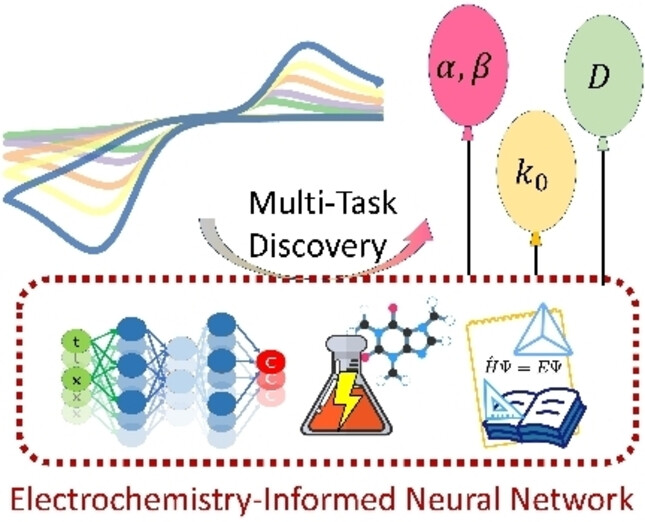
Electrochemistry-Informed Neural Network (ECINN) embeds chemistry prior knowledge including the Butler-Volmer, Nernst and Diffusion equations to discover electrode kinetics and mass transport parameter simultaneously from sparse experiments. ECINN seamlessly integrates mass transport and BV equation and provides arguably the best Tafel analysis method. This work encourages embedding domain knowledge to realize strong intelligence with sparse data.
Covalent Organic Frameworks
Enhancing the Crystallinity of Keto-enamine-Linked Covalent Organic Frameworks through an in situ Protection-Deprotection Strategy
- First Published: 07 February 2024

The protection of neighbouring groups during imine condensation reactions modulates the reactivity of building units in the synthesis of 2D covalent organic frameworks (COFs). The reduced reactivity of the protected aldehyde precursor decelerates the kinetics, making the reaction more reversible and improving the crystallinity of 2D COFs.
Selective Synthesis | Hot Paper
Diastereo- and Enantioselective Synthesis of Tetracyclic Cycloheptanols through (4+3) Annulation via C−C/C−H Activation Cascade
- First Published: 12 December 2023

A Rhodium-catalyzed intramolecular (4+3) annulation of α-arylalkene–benzocyclobutenols has been developed, which proceeds through sequential β-carbon elimination of alcohols, migratory insertion with alkenes, 1,4-Rh shift, and nucleophilic addition to the in situ formed ketones. The protocol offers a diastereo- and enantioselective approach to dihydrofuran-annulated dibenzocycloheptanols with two discontinuous chiral carbon centers built.
Biocatalysis
Selective C−H Halogenation of Alkenes and Alkynes Using Flavin-Dependent Halogenases
- First Published: 27 January 2024
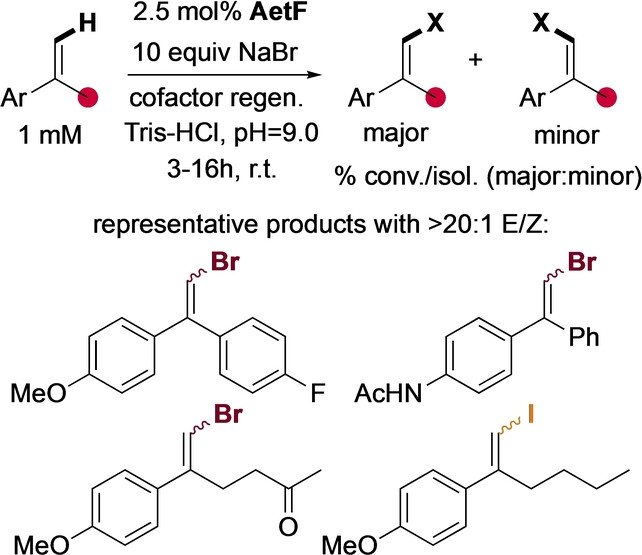
The single component flavin-dependent halogenase AetF halogenates a range of 1,1-disubstituted styrenes, often with high stereoselectivity, and AetF and homologues of this enzyme also halogenate terminal alkynes. These findings expand the scope of FDH catalysis, and mutagenesis studies and deuterium kinetic isotope effects provide insight into the unique utility of single component FDHs for biocatalysis.
CO2 Reduction | Very Important Paper
Antenna Effect in Noble Metal-Free Dye-Sensitized Photocatalytic Systems Enhances CO2-to-CO Conversion
- First Published: 05 February 2024
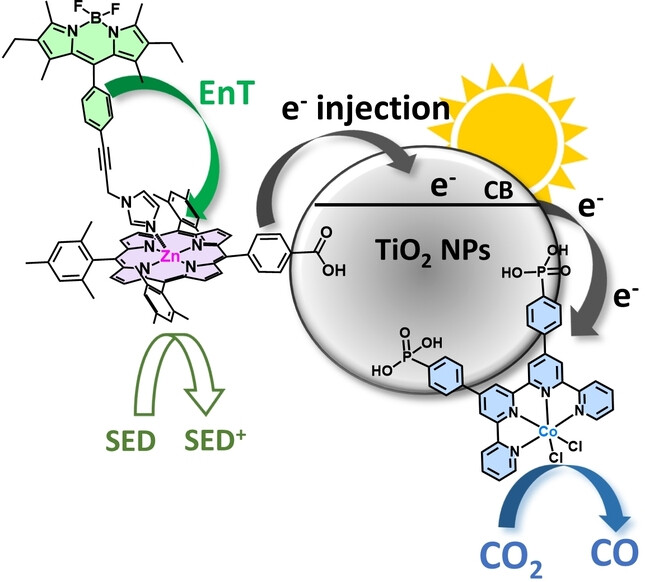
Efficient CO2-to-CO dye-sensitized photocatalytic systems are obtained by utilizing noble metal-free photosensitizer (zinc-porphyrin) and catalyst (cobalt-quaterpyridine) derivatives. Upon introducing an additional chromophore (Bodipy), an antenna effect enhanced the photoproduction leading to 42.1 mmol g−1 h−1 of CO and 759 turnover numbers.
Strained Molecules
ATP Synthesis
An ATP “Synthase” Derived from a Single Structural Domain of Bacterial Histidine Kinase
- First Published: 04 February 2024
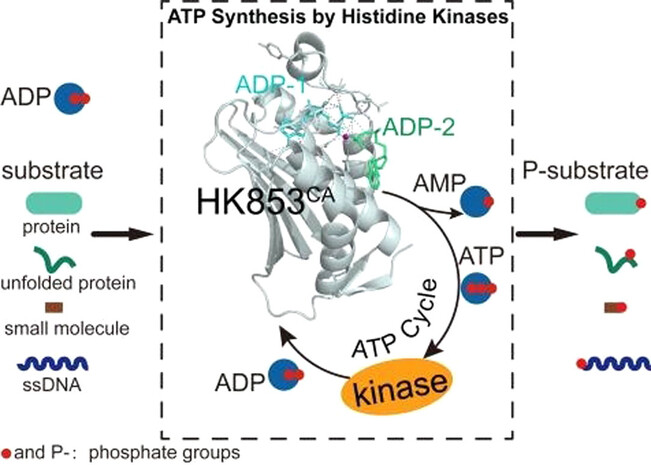
A single-domain ATP “synthase” was derived from bacterial histidine kinases. This enzyme catalyzes ATP synthesis from ADP under mild conditions in vitro by exploiting an AdK-like catalytic mechanism. It can be generally applied as new biomolecular catalyst used for ATP supply to facilitate multifarious vital phosphorylation systems.
Carboxylation
Copper-Catalyzed C4-selective Carboxylation of Pyridines with CO2 via Pyridylphosphonium Salts
- First Published: 02 February 2024
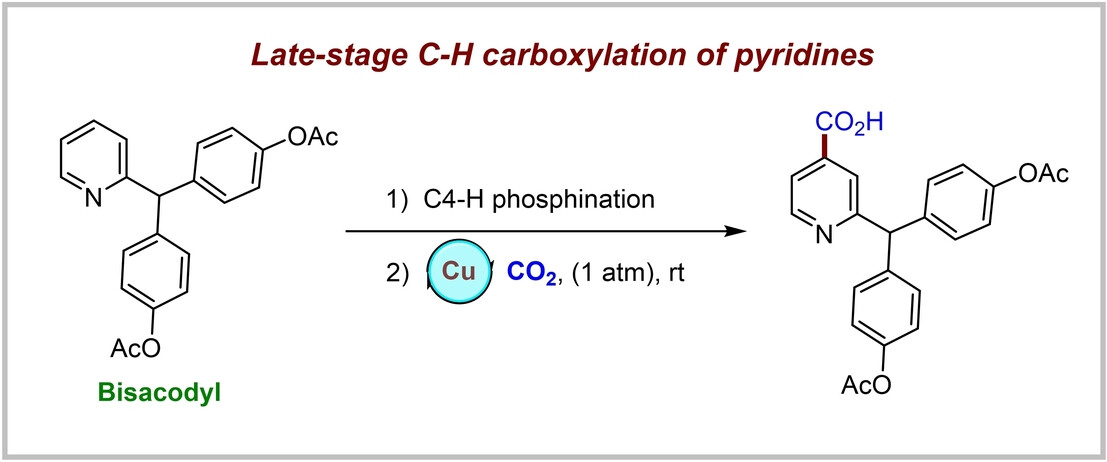
A practical copper-catalyzed C4-selective carboxylation of pyridines with CO2 via pyridylphosphonium salts has been developed. The C−P bond carboxylation with CO2 was achieved for the first time. This work represents a novel mode of site-selective carboxylation of pyridines, which may be a useful approach in new drug design and discovery in the future.
Multicentre Bonding
Pushing The Extreme of Multicentre Bonding: Planar Pentacoordinate Hydride
- First Published: 01 February 2024
Polymer Chemistry
Self-Assembly of Rod-Coil Bottlebrush Copolymers into Degradable Nanodiscs with a UV-Triggered Self-Immolation Process
- First Published: 06 February 2024
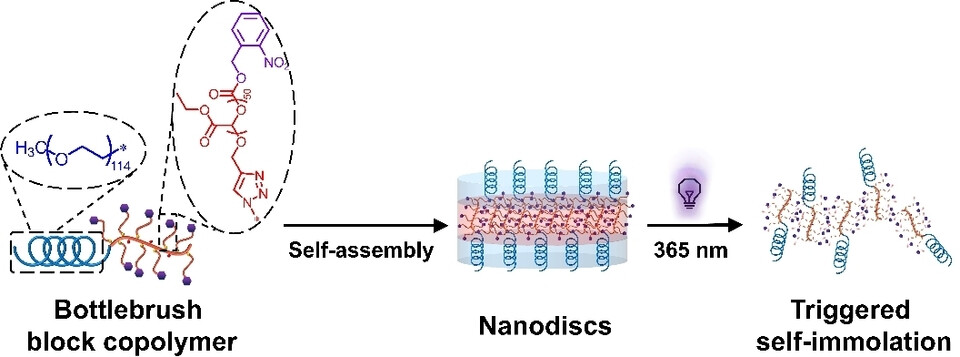
Tadpole-like amphiphilic bottlebrush block copolymer (BBC) with UV-responsive self-immolative poly(ethyl glyoxylate) side chains are prepared. Through direct self-assembly such BBC in water, nanoparticles with disc-like morphologies can be prepared. Upon UV irradiation, these nanodiscs demonstrate controlled degradation and disassembly, transitioning from discs to micelles, and facilitating targeted molecular release.
Organic Chemistry | Very Important Paper
Trifluoromethyl Rhodium-Carbynoid in [2+1+2] Cycloadditions
- First Published: 18 January 2024
![Trifluoromethyl Rhodium-Carbynoid in [2+1+2] Cycloadditions](/cms/asset/ba17866a-bb66-4cf3-bd7c-853bbf85f0fb/anie202318887-toc-0001-m.jpg)
A novel α-diazotrifluoroethyl sulfonium salt was prepared, and it was applied in Rh-catalyzed three-component [2+1+2] cycloadditions for the first time, affording various imidazo[1,5-a] N-heterocycles under mild conditions. This strategy involved a unique trifluoromethyl Rh-carbynoid (CF3C+=Rh), wherein three new chemical bonds were forged at the α-carbon of trifluoromethyl in a single step.
Immunotherapy | Hot Paper
A Bioengineered Nanovesicle Vaccine Boosts T-B cell Interaction for Immunotherapy of Echinococcus multilocularis
- First Published: 02 February 2024
Protein Profiling
A Modular Turn-On Strategy to Profile E2-Specific Ubiquitination Events in Living Cells
- First Published: 30 January 2024
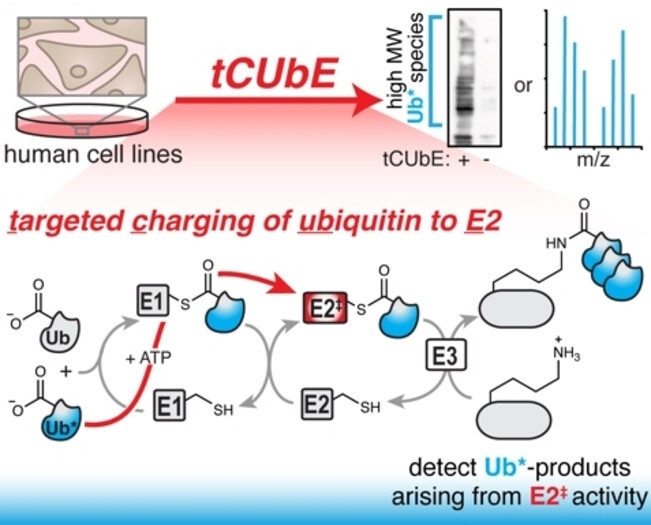
A cascade of three enzymes, E1−E2−E3, is responsible for transferring ubiquitin to target proteins, but the role of the central E2 has been largely overlooked. This work presents a new method, called targeted charging of ubiquitin to E2, or tCUbE, that can follow ubiquitin all the way through its cascade to report on E2 activity and interactions in living mammalian cells.
Asymmetric Catalysis | Hot Paper
Synthesis of S(IV)-Stereogenic Chiral Thio-Oxazolidinones via Palladium-Catalyzed Asymmetric [3+2] Annulations
- First Published: 29 January 2024
Polymer Chemistry | Hot Paper
Torsional Strain Enabled Ring-Opening Polymerization towards Axially Chiral Semiaromatic Polyesters with Chemical Recyclability
- First Published: 14 February 2024

To overcome the non-polymerizability of the biaryl-fused monomer DBO, a cyclic ester Me-DBO installed with dimethyl substitution was prepared to enable its polymerizability via enhancing torsional strain while preserving an excellent recyclability. Remarkably, mixing these complementary enantiopure polymers containing axial chirality promoted a transformation from amorphous to crystalline material.
Hydrogen-Bonded Frameworks | Hot Paper
Anionic Hydrogen-Bonded Frameworks Showing Tautomerism and Colorful Luminescence for the Ultrasensitive Detection of Acetone
- First Published: 06 February 2024

A hydrogen-bonded organic framework (HOF) based on tautomers has been constructed from triarylamidine bromide salts. The HOF exhibits both structural phase transition and proton transfer tautomerism under external stimulation, accompanied by color-switching of the thermally activated delayed fluorescence and room-temperature phosphorescence. The HOF can be used for the highly sensitive and specific detection of acetone.
CO2 Photoreduction | Very Important Paper
Light-Driven C−C Coupling for Targeted Synthesis of CH3COOH with Nearly 100 % Selectivity from CO2
- First Published: 07 February 2024
Molecular Electrocatalysis
Switching Electrocatalytic Hydrogen Evolution Pathways through Electronic Tuning of Copper Porphyrins
- First Published: 04 February 2024
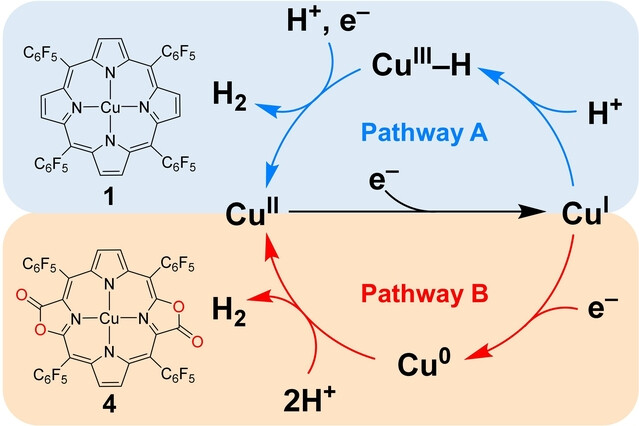
A series of Cu porphyrins with fine-tuned electronic structures are synthesized and examined as electrocatalysts for hydrogen evolution. Mechanism studies reveal that the catalytically active species switches from a formal CuI species to a formal Cu0 species upon decreasing the electron density of these Cu porphyrins. This work presents an unparalleled example of regulating hydrogen evolution reaction mechanism via electronic tuning of catalysts.
NTE Materials
Giant Negative Thermal Expansion in Ultralight NaB(CN)4
- First Published: 14 February 2024
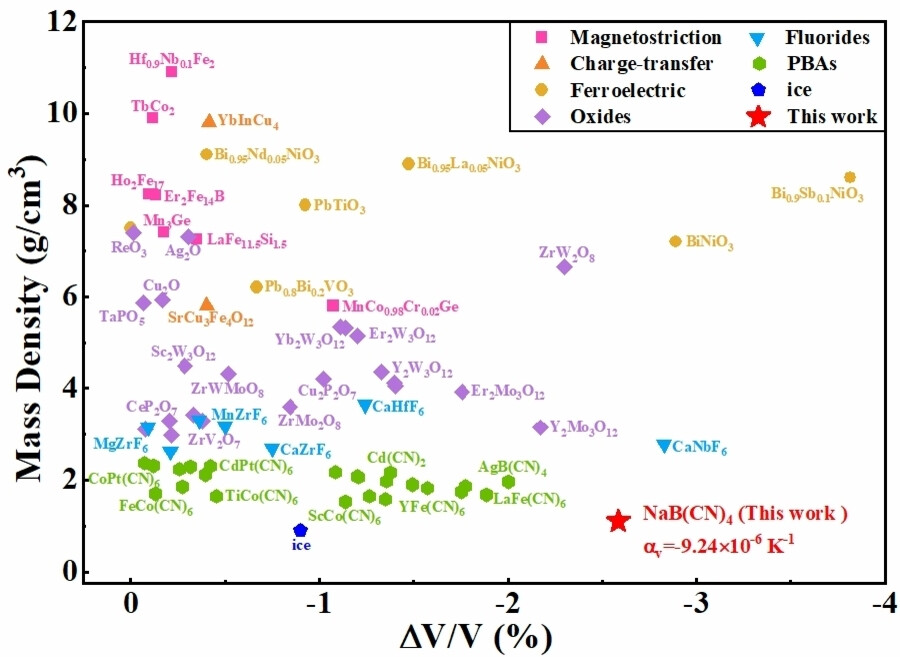
NaB(CN)4 exhibits a giant negative thermal expansion behaviour (αV∼−9.24 ⋅ 10−5 K−1, 100–200 K; αV∼−3.7 ⋅ 10−5 K−1, 200–650 K) with interesting ultralight mass density properties. Non-rigid vibrational modes, characterized by a maximum negative Gruneisen parameter, play a key factor in the generation of the giant NTE observed in NaB(CN)4.
Polycyclic Aromatic Hydrocarbons
Stabilization of Acenes: “Geländer”-Pentacenes
- First Published: 05 January 2024

A convenient three-step synthesis, starting from commercially available pentacenetetraone, gives helical, doubly quaterphenylene wrapped pentacenes. The “Geländer” architecture effectively shields the acene backbones—the para-quaterphenylene derivative displays unique stability with respect to photoxodiation and Diels–Alder reaction with PTAD or fullerene.
Microplastic Degradation | Hot Paper
Engineered Anchor Peptide LCI with a Cobalt Cofactor Enhances Oxidation Efficiency of Polystyrene Microparticles
- First Published: 22 January 2024
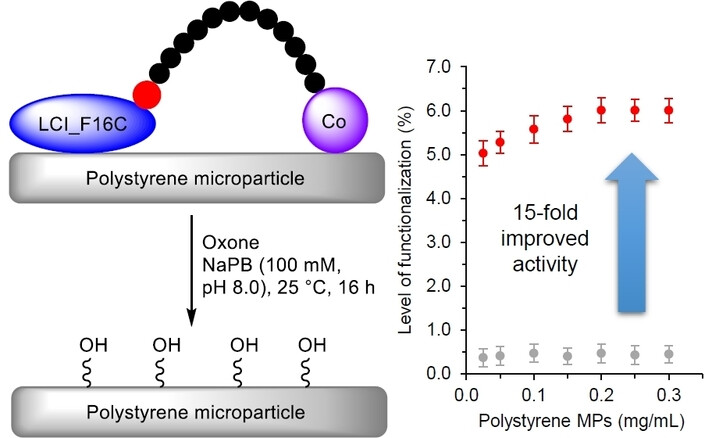
Engineered anchor peptide LCI_F16C with a flexible cobalt cofactor Co-L2 hydroxylated polystyrene microparticles using commercially available oxone as oxidant. The oxidation using biohybrid catalyst (Co-L2@LCI_F16C) showed 15 times higher functionalization level than using the free cobalt cofactors.




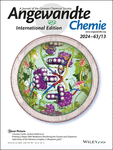

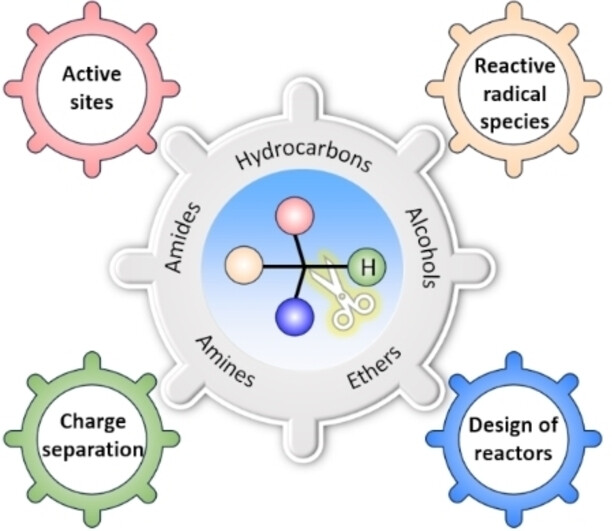
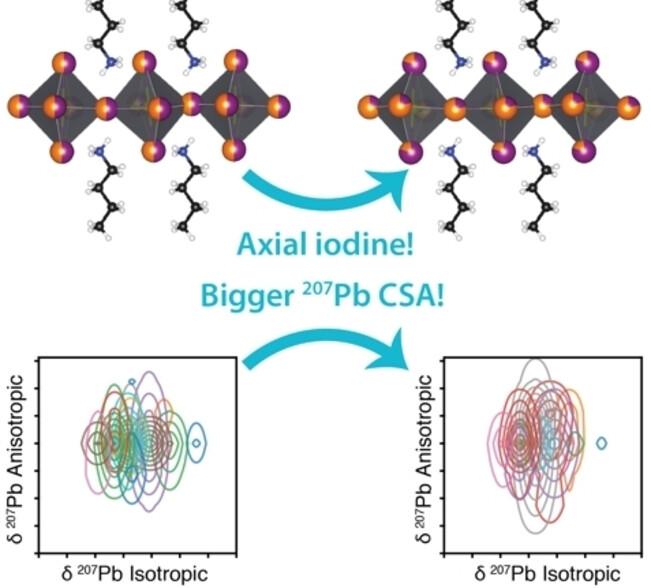

![Probing a Major DNA Weakness: Resolving the Groove and Sequence Selectivity of the Diimine Complex Λ-[Ru(phen)2phi]2+](/cms/asset/8a2dc18c-feba-44cd-a430-05f33c26e000/anie202318863-toc-0001-m.jpg)
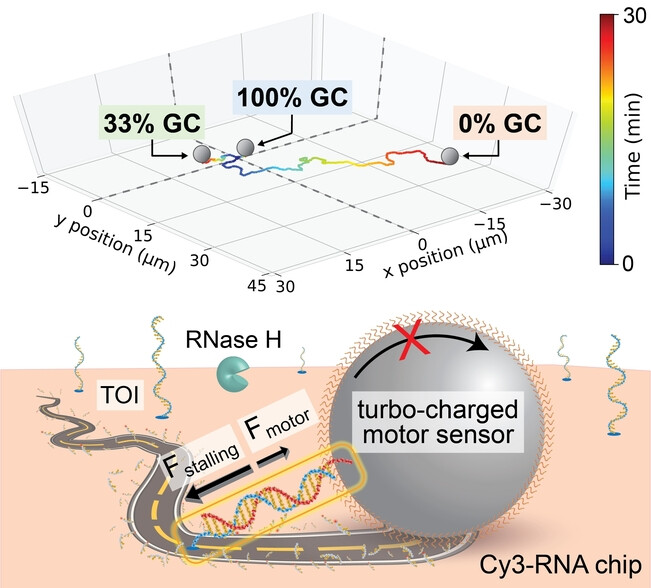
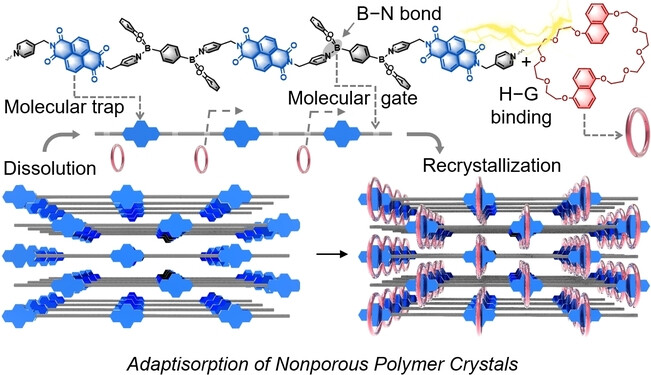

![Eu(OTf)3-Catalyzed Formal Dipolar [4π+2σ] Cycloaddition of Bicyclo-[1.1.0]butanes with Nitrones: Access to Polysubstituted 2-Oxa-3-azabicyclo[3.1.1]heptanes](/cms/asset/5e837422-5315-4994-8413-50166e02f597/anie202318476-toc-0001-m.jpg)
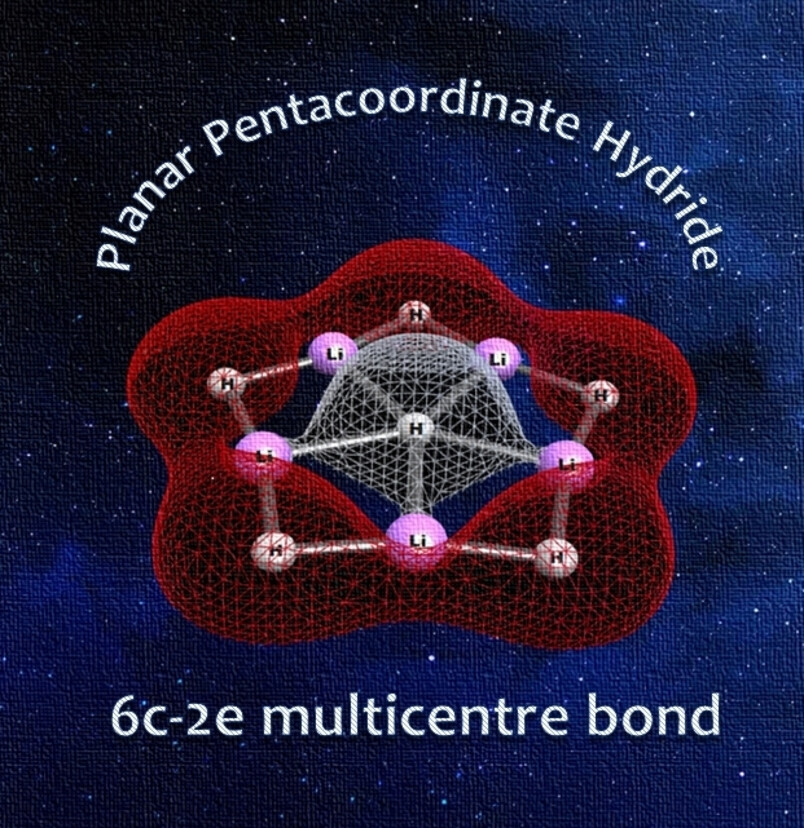
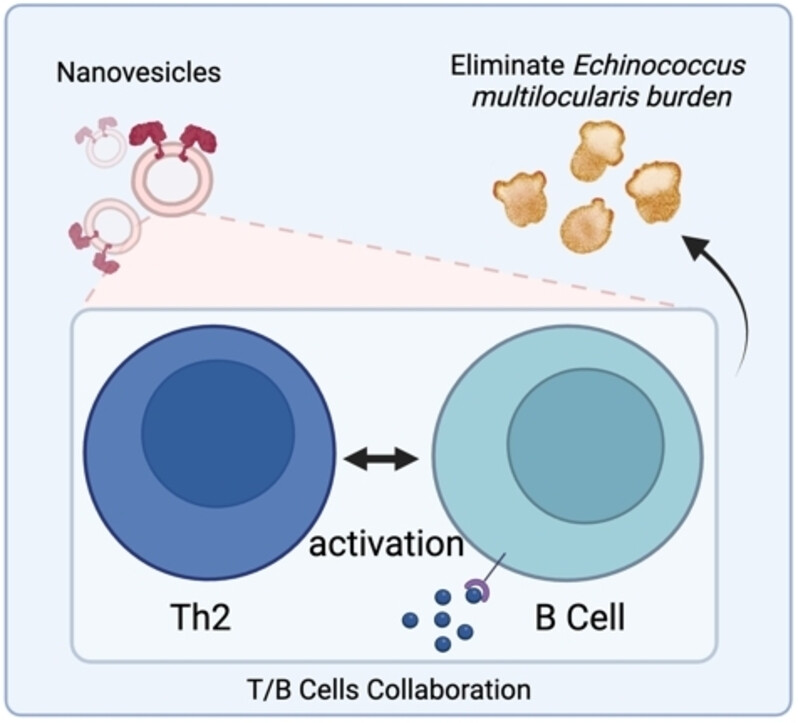
![Synthesis of S(IV)-Stereogenic Chiral Thio-Oxazolidinones via Palladium-Catalyzed Asymmetric [3+2] Annulations](/cms/asset/99ada911-1051-486f-b10e-2ba76487da49/anie202319728-toc-0001-m.jpg)
